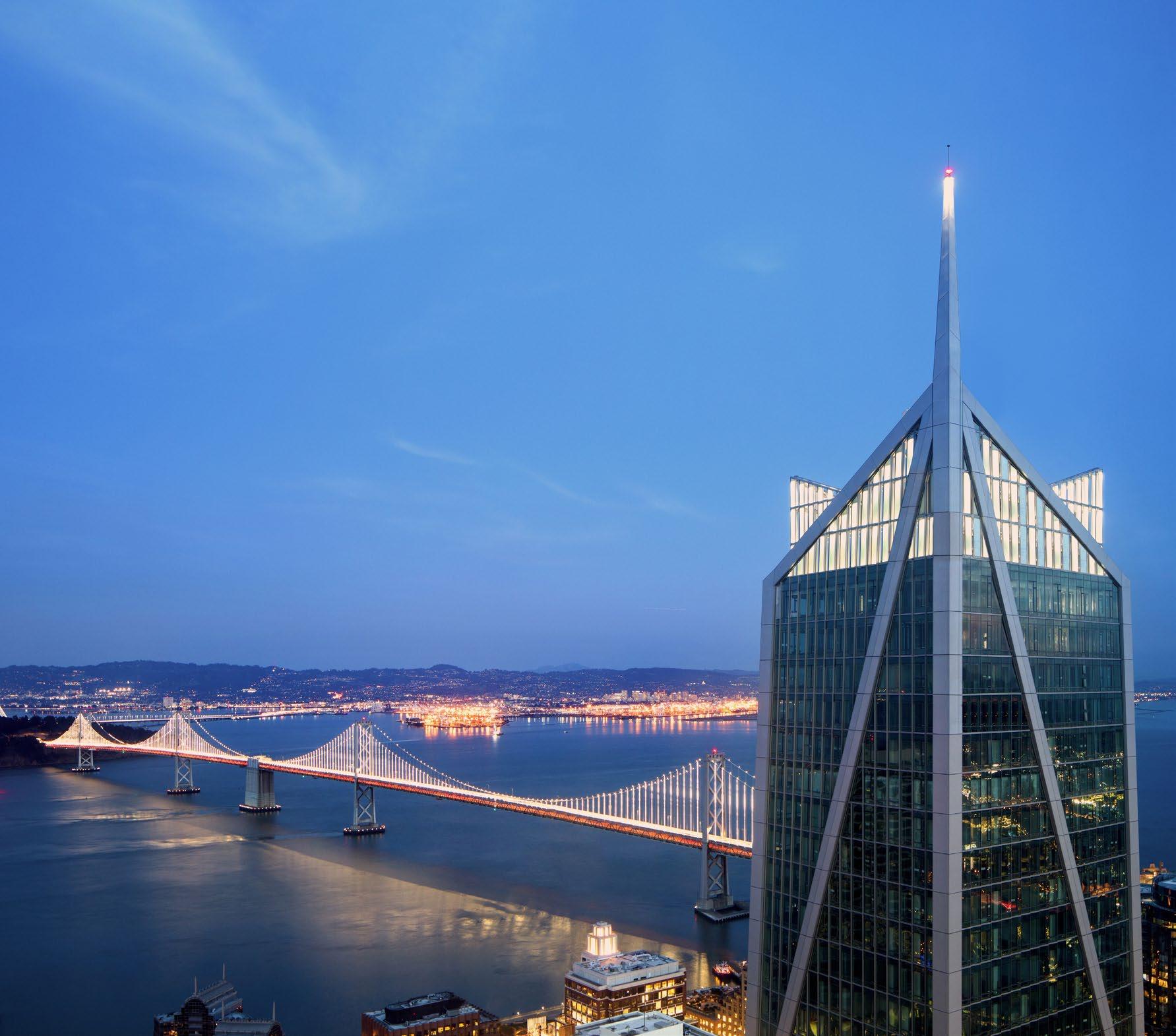
38 minute read
Diplomacy
DC INTERNATIONAL
Finance Minister Smt. Nirmala Sitharaman Participates in the 105th Meeting of the Development Committee Plenary in Washington,
D.C. | Union Minister of Finance and Corporate Affairs Smt. Nirmala Sitharaman participated in the 105th Meeting of the Development Committee Plenary in Washington. Items on the agenda included digitalization and development, making debt work for development and macroeconomic stability, and the discussion of the World Bank’s response to the global impacts due to the war in Ukraine.
At the session, the finance minister stated that India’s economic growth in the current year is robust and highest among all large economies and reflects India’s resilience and strong recovery. (Embassy of India)
Final Event of the Italy-USA Cooperation Project and Bridge
the Pond Project | On May 5th, the Embassy of Italy hosted the final event of the Italy-USA Cooperation Project. This project which ran during the 2021/2022 school year, included the Parentucelli-Arzela’ Institute of Higher Education in Sarzana (La Spezia) and Annapolis High School in Maryland. Three scholarships were awarded to Italian students who will spend three weeks in October at the “twin” school in Annapolis. In spring next year, three American students will visit their counterpart in Italy.
About sixty students from the Parentucelli-Arzela’ Institute and ten students from Annapolis High School participated in the ceremony virtually. Seventeen students from the Walt Whitman High School in Maryland, and two of its teachers, attended the event in person at the Embassy.
The project was supported by the Italian Embassy by an in-part contribution assigned from the Italian Ministry of Foreign Affairs and the Casa Italiana Language School of Sarzana. It was an opportunity to strengthen ties and exchanges and allow students to broaden their reciprocal cultural knowledge, enhance dialogue between the two cities and countries, and strengthen language skills. (Embassy of Italy)
America’s Pivot to Asia 2.0: The Indo-
Pacific Economic Framework | On his Asia trip, U.S. President Joe Biden announced that Japan, India and 10 other countries have committed to join the U.S.-led Indo-Pacific Economic Framework (IPEF). Those countries include Australia, Brunei, Indonesia, South Korea, Malaysia, New Zealand, the Philippines, Singapore, Thailand, and Vietnam. Not included, at least for now, are Taiwan, three ASEAN member states (Cambodia, Laos, and Myanmar) and China (obviously). But the door to their future membership remains (at least theoretically) open.
Through IPEF, the United States hopes to economically engage the Indo-Pacific and counter China’s increasing economic and political influence in the region. With around 60 percent of global population, the region is going to be the main driver of economic growth in the world in the next few decades. According to the White House, the region “supports 3 million American jobs” and is “the source of nearly $900 billion in foreign direct investment in the United States,” while U.S. FDI in the region totaled around $969 billion in 2020. What’s more, the United States is the “primary exporter of services to the region.” (The Diplomat)

PURVEYOR OF THE WASHINGTONIAN LUXURY LIFESTYLE
+1 703 798 0097 | john@johneric.com
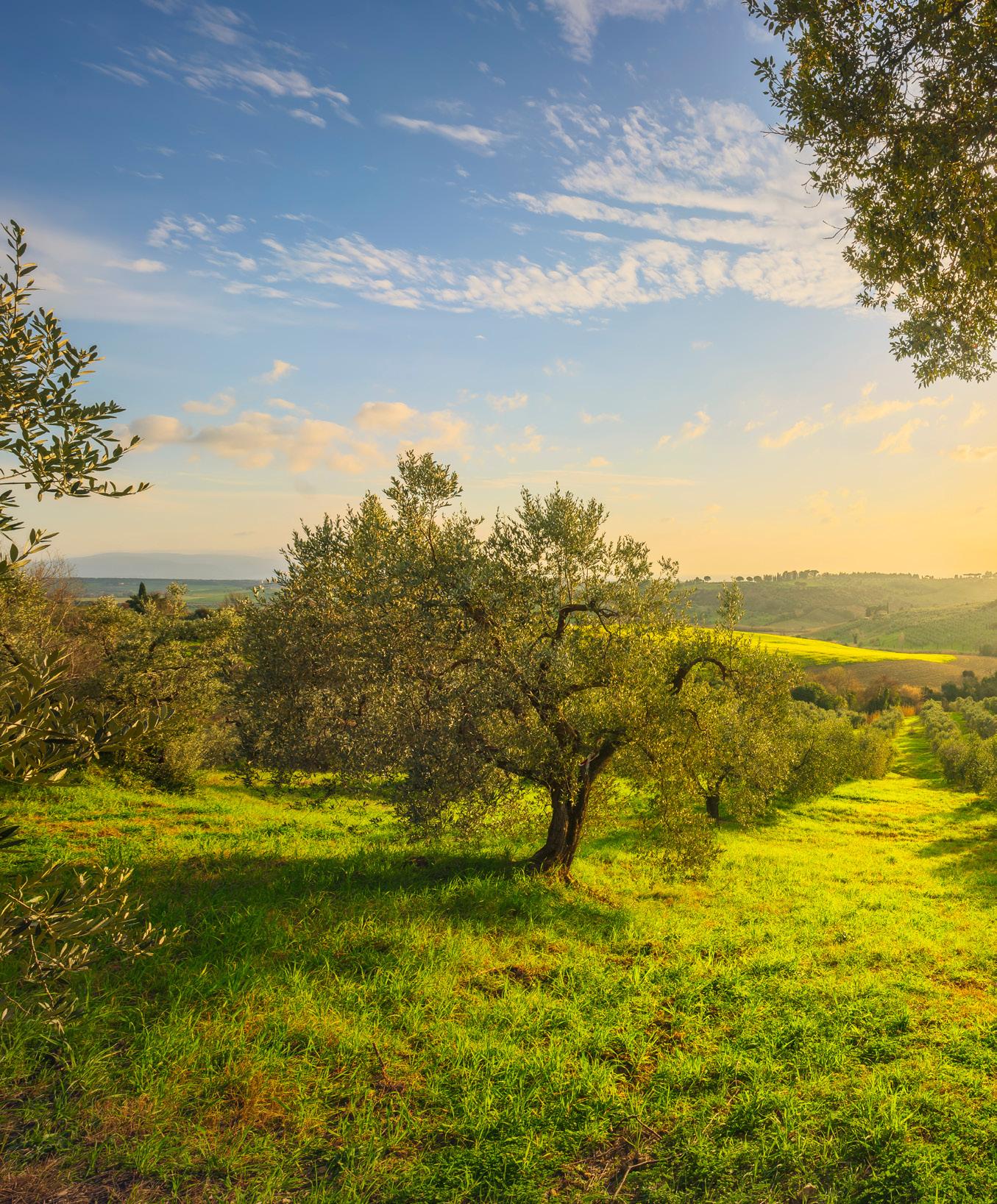
223 EUROPE
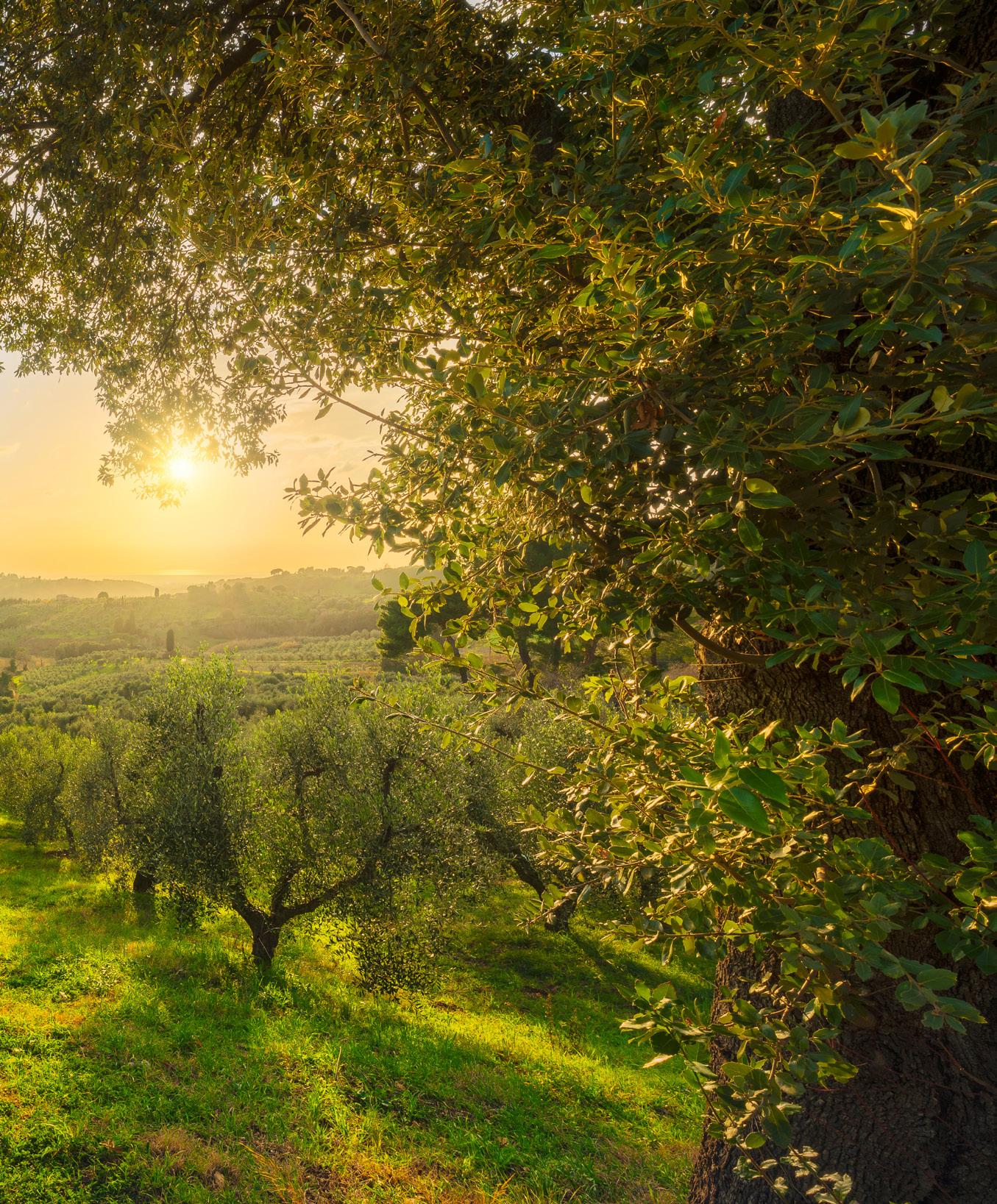
The other day, an old friend whom I hadn’t heard from in a while, texted me: “Wait a minute, you’re living on a farm in Southern Spain?”
“That’s right,” I responded. I have to admit that, even after two-plus years, the unreality of it all still catches me by surprise…in a good way.
It wasn’t very long ago that my daily life was all about ‘final sketch review’ meetings in a downtown Los Angeles fashion studio; or stressful, 11th-hour marathons managing a sewing team to complete apparel samples in time for a New York trade show.
Cut to the present, where days on our Spanish “Finca” (farm) are taken up with collecting fresh eggs from the gallinas (hens); flipping two rooms for the next arrivals of our guests, picking fruit from our orchard; stripping bamboo for a new DIY structure; and–wait, what’s this? --there’s a problem with the solar panel inverters and the electricity may fizzle out overnight? I’d better have my handy better half check on that!
The story goes like this: I met my husband, Wilco, while we were both traveling abroad in southeast Asia, in 2013. I had quit my demanding, fast-paced fashion designer job because I was itching to get out of the L.A. work-grind bubble and see a world I was worried I’d never get a chance to explore. Not that long after we met and explored more of the Far East together, Wilco eventually moved from his home in Rotterdam to Los Angeles, where we got married and worked hard for another five years.
Somewhere amid those years we seized upon the idea of running a small bed-and-breakfast. Aside from the adventure of it all, we saw it as an opportunity for a quieter, higher-quality life, with the freedom to travel more. A European destination made the most sense–with Wilco’s EU citizenship, it would be relatively easy to gain working and living status there as a married couple. Wilco narrowed our search down to southern Europe, as his biggest “must-have” was significantly better weather than his native Netherlands. So, we settled on the sunshine surrounding the Mediterranean.
AN AMERICAN IN Andalucía
BY ERIN FARR
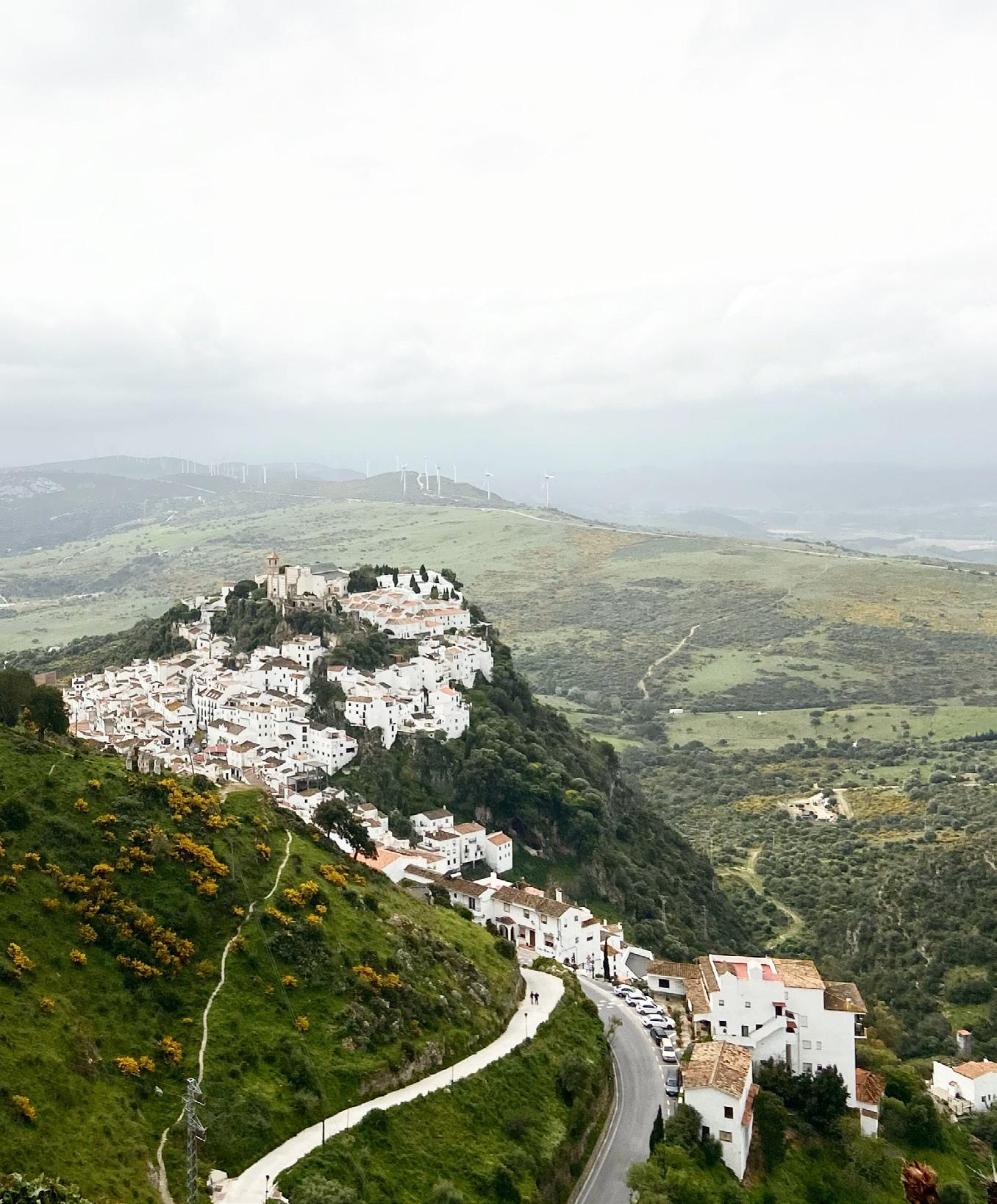
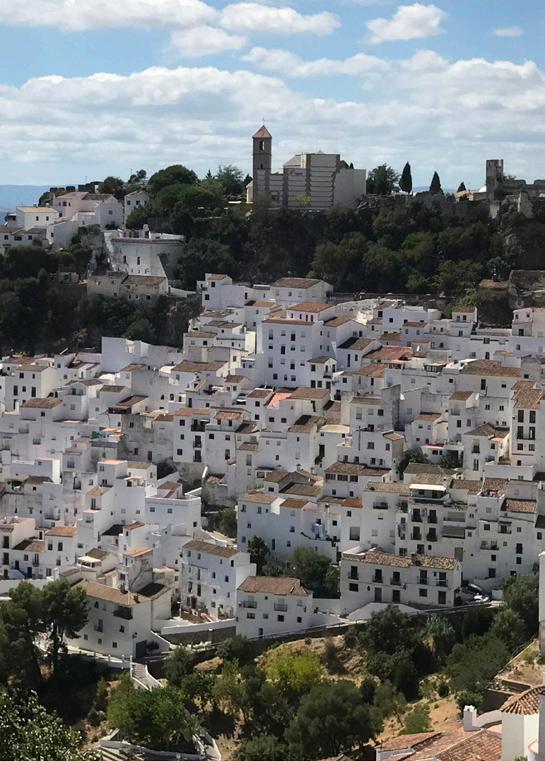
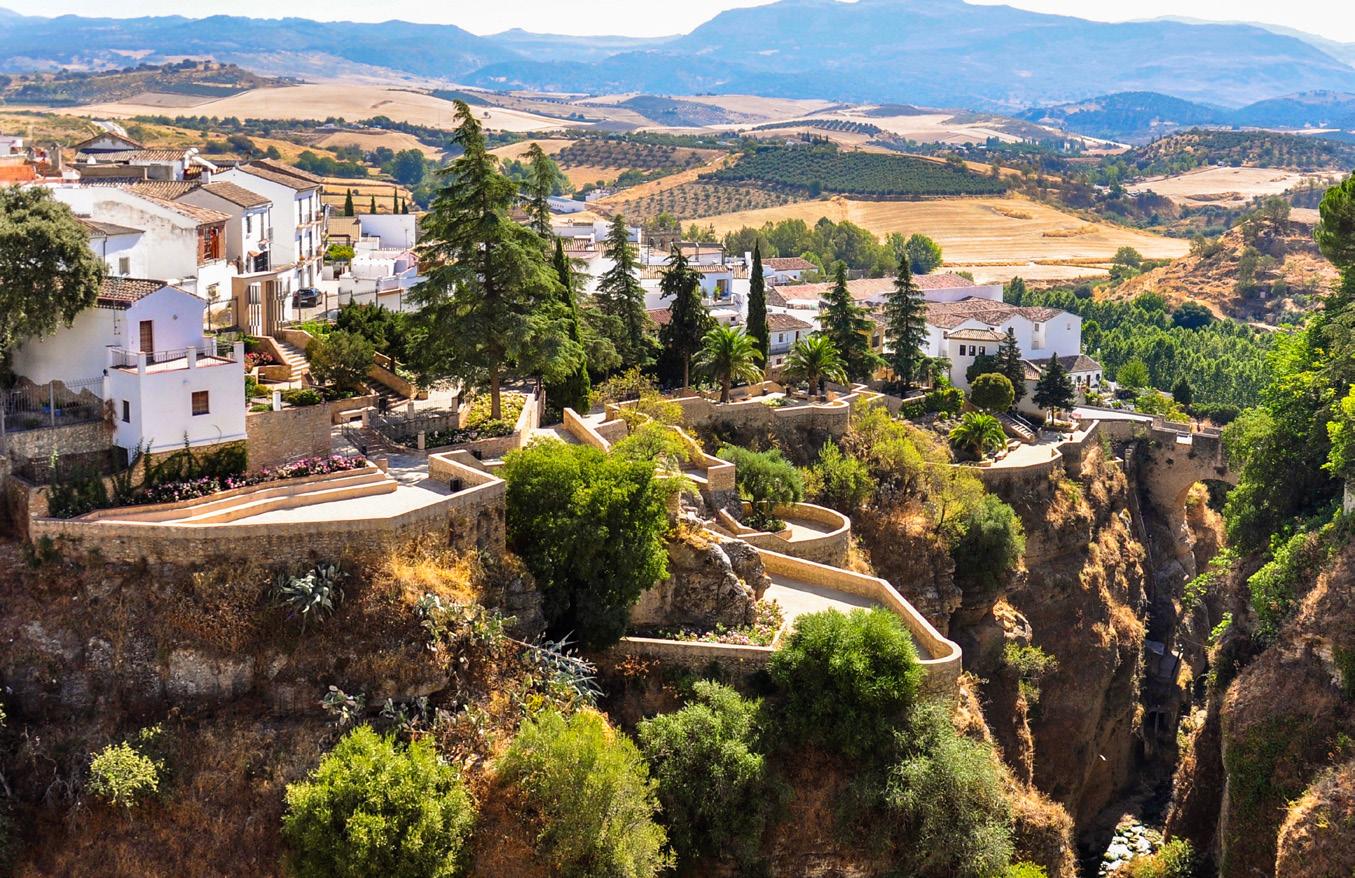
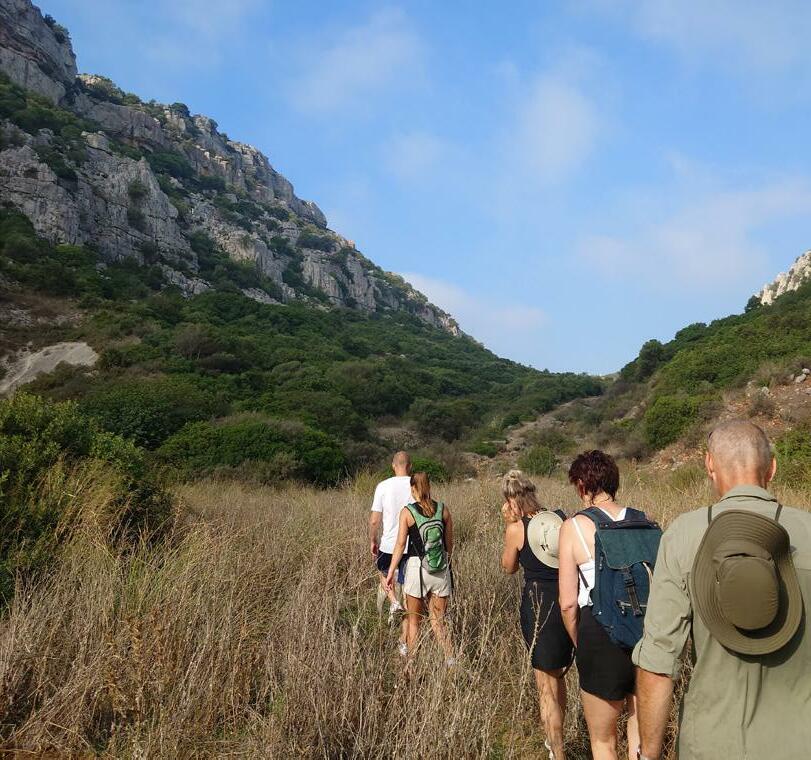
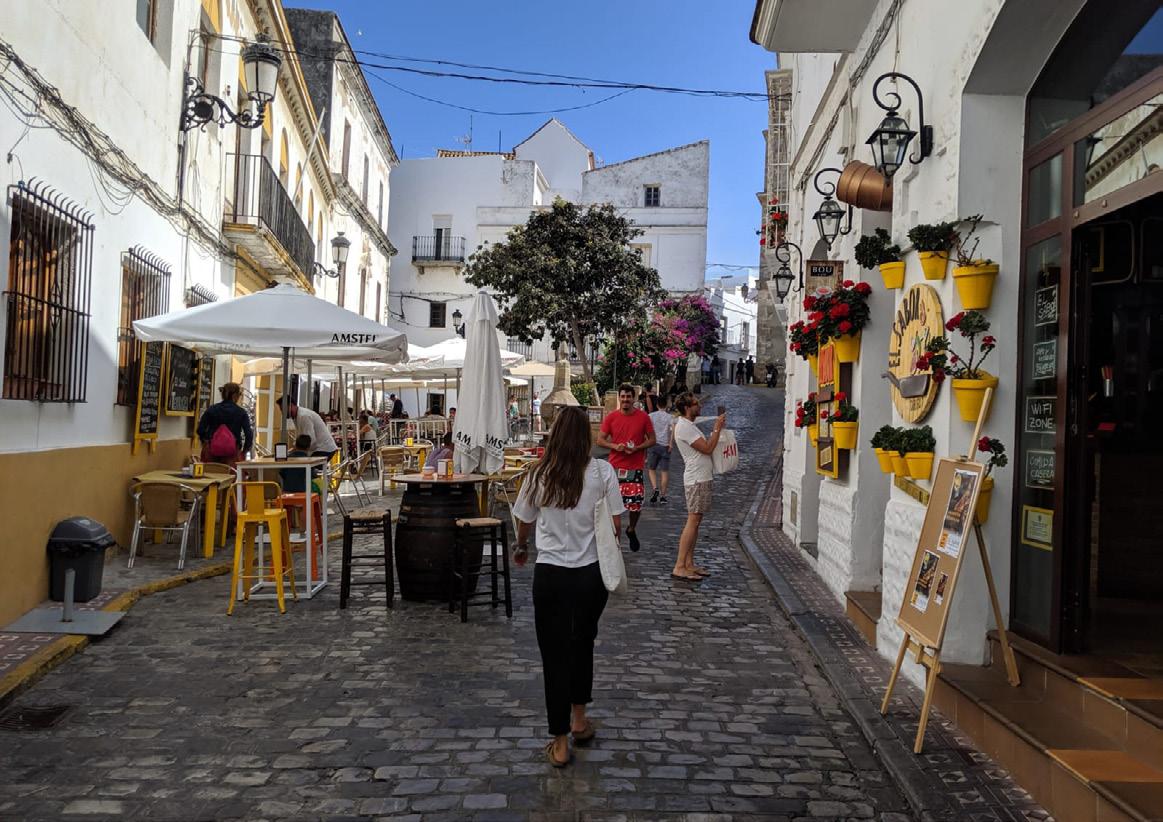
In 2019, we condensed our stateside life into six boxes that we shipped off to the Netherlands for storage at Wilco’s family home. That kicked off what would be a solid year of traveling. The idea was to enjoy some well-earned vacation, but also to scope out what we considered sensible places to start our B&B. In the beginning, we had our hearts and minds set on Portugal. Although we didn’t end up there, one of the best months of my life was spent living in a converted sleeper van as we made our way down Portugal’s rugged but beautiful coast.
Nowadays, most of our guests ask us why we chose this rustic farm above Spain’s Costa del Sol to settle in. Simply put, we chose it based on a feeling. Or, I guess, you could call it intuition…
It was a Sunday in Tarifa, a small seaside village about an hour’s drive from the village of Casares, the outskirts of which is where our farm is located. We spent that memorable afternoon on a sunny terrace along the main street. We were sitting there sipping cervezas, people-watching as the village teemed with happy families engaged in their own Sunday leisure. A more broadened property search from there led us to the intersection of Cádiz and Málaga provinces. We’d never heard of Casares before that, but, in hindsight, it was nearly everything we were looking for. Our bed and breakfast dream finally had a home.
Perched on a dramatic hilltop, the white-washed, red-tileroofed village of Casares overlooks the Mediterranean, which is just a few klicks down a winding, picturesque two-lane road. Elevated and completely surrounded by steep green hills and, though, often breezy, there’s a certain peacefulness to it. Will and I, along with our dog, Oscar, often spend a Saturday hiking one of several trails that end right in the village. We’ll enjoy a bebida (beverage) around the historic central fountain, the beating heart of the town. Local grandfathers–“abuelos”--line the benches in a noisy chat fest, their daily ritual. Kids kick a soccer ball to one another. Women queue up at the mini-market eager to buy a loaf or two of their amazing fresh-baked bread. These are the “small-town” moments that make me smile in agreement with our life-changing decision.
A short walk from Casares center is Restaurante Sarmiento, a modern culinary experience, maybe not so expected in the small village. Two brothers have taken their traditional, family-run restaurant and elevated it to offer local meat dishes that are aged and grilled to perfection. A house special includes succulent grilled goat that’s sourced from the herds roaming the mountains in your view. (In fact, Casares is also known for its goat cheese!) Sarmiento’s open air dining terrace offers the best view of Casares. From any glimpse, dining guests can observe a buitre (vulture) flying just above their eye level. A huge griffon vulture colony resides in the encom-
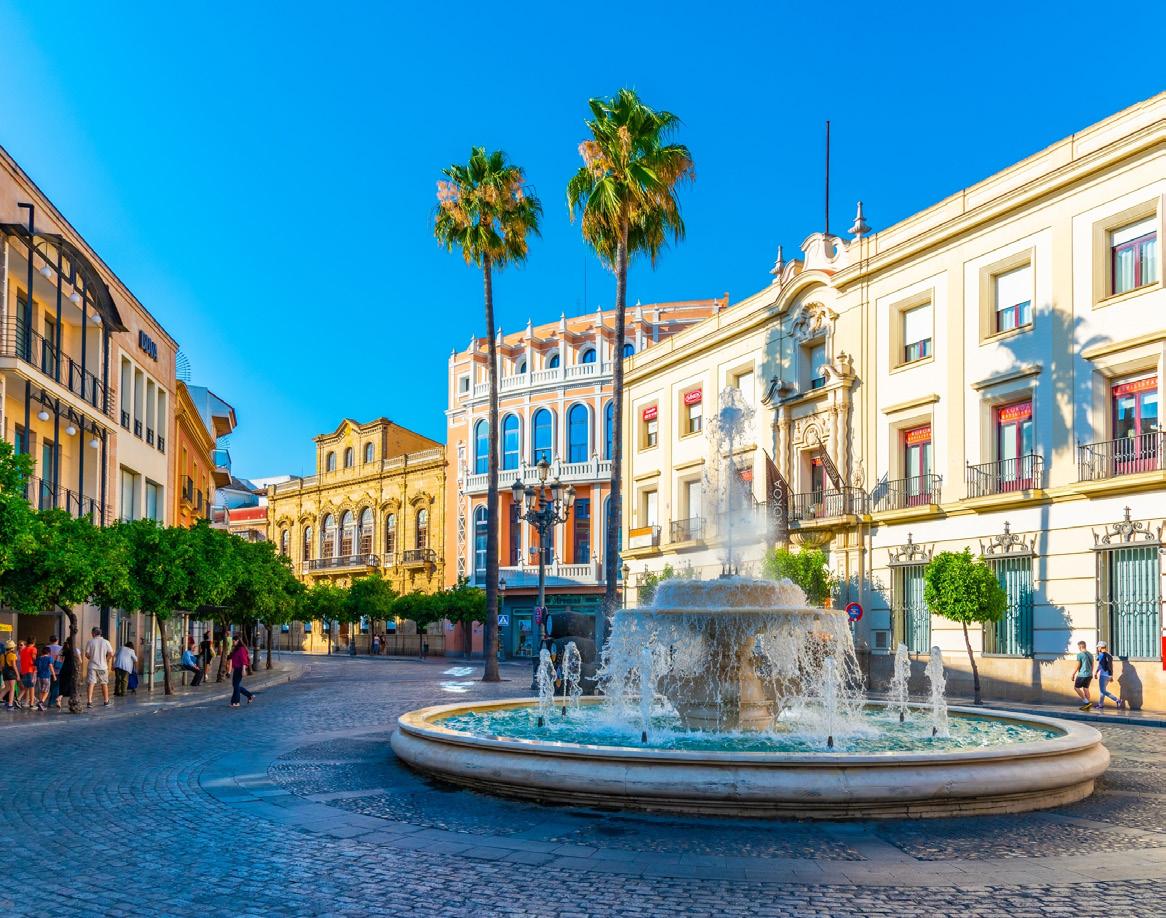
passing Sierra Crestellina Mountain range, the beautiful peaks that dominate the view. Did I mention that Morocco is in that skyline as well? The African port city, Tangier, is only a short ferry ride away, across the narrow Strait of Gibraltar at the mouth of the Mediterranean.
Casares is just a small, sweet dose of Andalucía’s charm. Another quality of this region that attracted us (and millions of other travelers) is the variety of things to see and do, all relatively close-by. A visit here offers lucky travelers a trifecta of enticements–the mountains, the sea, and the quaint villages–all rolled into one destination. The Costa del Sol remains a beachgoers’ paradise, dotted with lively bars, as well as bike and SUP rentals in every seaside town. (Estepona has become one of our favorites–don’t forget to put it on your list!) Leaving the beaches and winding up along the scenic mountain roads, travelers can spend their entire holiday visiting the many “pueblos blancos,” the whitewashed villages that Andalucía is so well-known for.
Our guests almost always plan a stop in the historic city of Ronda; as well as the artistic villages of Gaucín and Jerez de la Frontera, where flamenco music and sherry production are the orders of pleasure and business. Travelers also love to cross the Spanish border into nearby Gibraltar, which is just 35 minutes from Casares. Here, the British territory bustles like a displaced London borough, all situated under the famous, jurassic-era limestone rock that some consider one of the world’s great wonders…How’s that for contrast?
Our Finca, which we’ve dubbed “The Wild Olive Andalucía,” is an exciting new chapter of our life now. Situated in the Casares “campo” (countryside), our four-guest-bedroom farmstay is a lovely rural escape. We are completely off-grid, relying on the Spanish sun for electricity and the well for our water supply. Nearly 200 years old, the Finca’s build is a charming, romance-inducing bit of trivia that happens to involve a mega-measure of regular maintenance. It takes a different set of skills and presence of mind to live and work in this manner, forsaking a lot of “city-life” comforts and resources that I once took for granted. The challenge of operating the farm as a business and doing so in a country that’s largely foreign to us can be overwhelming at times. “Hablas Ingles?” Language barrier! And, as anyone can imagine, attempting to get our business up and running during the pandemic was tough. But in the end, it makes the compliments our guests from all over the world give us as they depart all the more
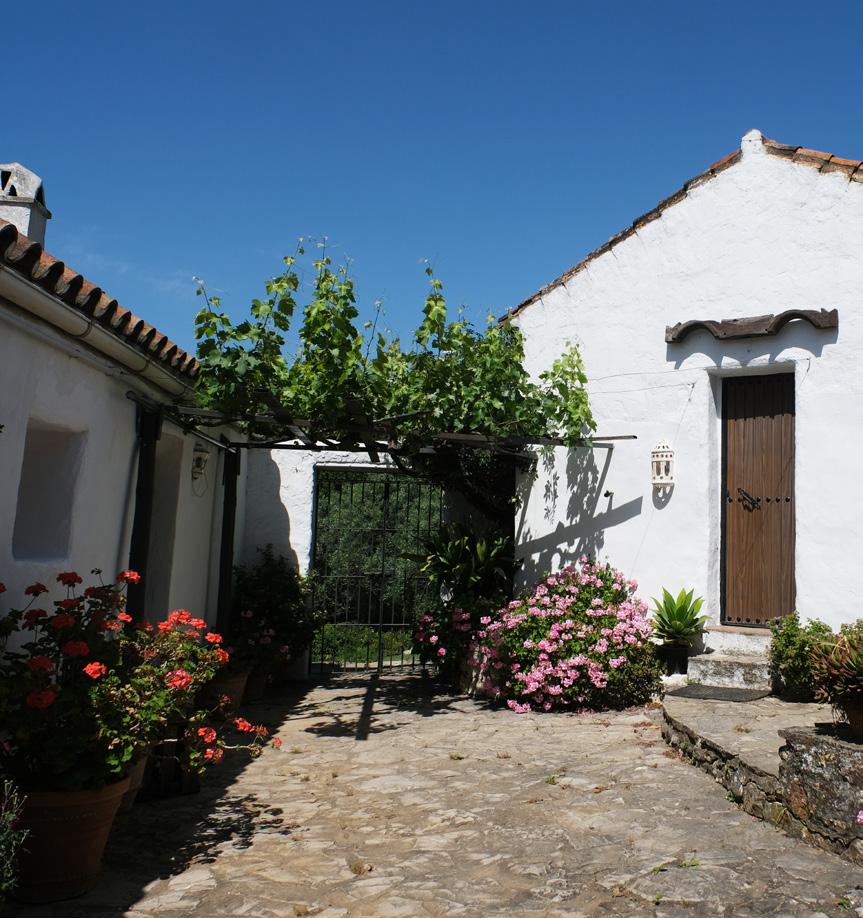

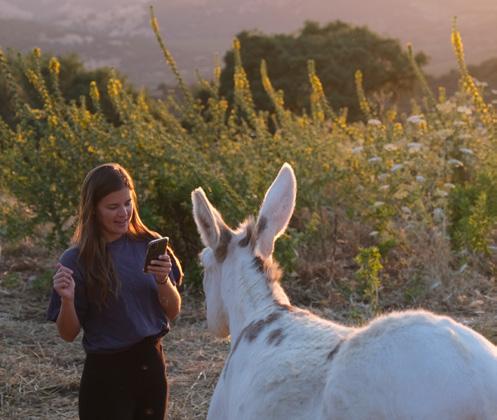
meaningful. When we say farewell after their summer holiday and they tell us it was their best trip ever . . . it’s incredibly rewarding to think we’ve brought them this bit of joy with what we’ve created (with Mother Nature’s help, of course).
Apart from our busy days during the high season at The Wild Olive, life in Andalucía feels slower and more carefree. The cultural priorities, here, remain focused on family and relationships. Taking a long, leisurely paella lunch to really savor, then a siesta before heading back to the next task. Working to live and not the other way around. While our paychecks may not amount to what they used to, we have a different set of riches here. The benefit of free time to enjoy the stunning natural beauty of this region. And if, say, on a random Wednesday, after a trip to stock weekly groceries, we feel like popping into our favorite chiringuito (beach bar) for a beer and tapas, we have the freedom to do just that. The demands on us are still there, of course, but they’re different, and far less intense.
A common joke about the Andalusíans is that their favorite saying is “Mañana, mañana!” As in, no rush, relax, it will get done when it gets done. Perhaps it’s too difficult a culture shift for some to live here, especially those accustomed to the U.S.’s frenetic pace. In the time I’ve lived here, I’ve come to believe that the Spanish have really figured it out. “Mañana” has its roots in something meaningful and manageable, something worth striving to enjoy. Give it a try on your next holiday.


THE TOP 5 FAMOUS COFFEEHOUSES IN VIENNA
Coffeehouses are part-and-parcel of Viennese life and one of the most-known cultural aspects of the city. It is difficult not to find a good cup of coffee in the city. If you are in Vienna, stop by one of these houses for not only a treat but some history…
CAFÉ CENTRAL
A tourist destination – as both Trotsky and Freud frequented the establishment – it is easily spotted because of the long lines outside its door. The coffee here is wonderful as is its interior architecture.
Herrengasse / Strauchgasse, 1010 Vienna.
CAFÉ SACHER
A top list of Viennese coffeehouses would be remiss if it didn’t include the Sacher. This café is the home of the original Sachertorte cake, so visitors get double bang for the buck. An amazing cup of coffee and a piece of the cake from its original site.
Philharmoniker Str. 4, 1010 Vienna.
CAFÉ PRÜCKEL
First opened in 1903, the café reflects the long association between coffeehouses and the arts as a theater is located inside. The café is a favorite meeting spot for students from the nearby University of Applied Arts.
Stubenring 24, 1010 Vienna.
CAFÉ LANDTMANN
Opened in 1873, this is the spot where high society goes to see and be seen. It is located next to the Burgtheater and opposite city hall, so it is common to see both politicians and actors enjoy an afternoon pick-me-up.
Universitätsring 4, 1010 Vienna.
CAFÉ HAWELKA
Hawelka is a comfortable coffeehouse and is centrally located between between Stephansdom Cathedral and the Hofburg Palace. Pop legend, Falco, celebrated his 30th birthday here, and other prominent guests have included Andy Warhol, Klaus Maria Brandauer, and Peter Ustinov.
Dorotheergasse 6, 1010 Vienna.

SNAPSHOT
Italia
Have you ever had the dream of chucking it all in, moving to Tuscany, and buying a vineyard? If you have, keep reading. John Eric Home has caught up with William Hutchinson, whose family is from and still lives in Tuscany. He owns and operates a bio vineyard outside the city of Pitigliano.
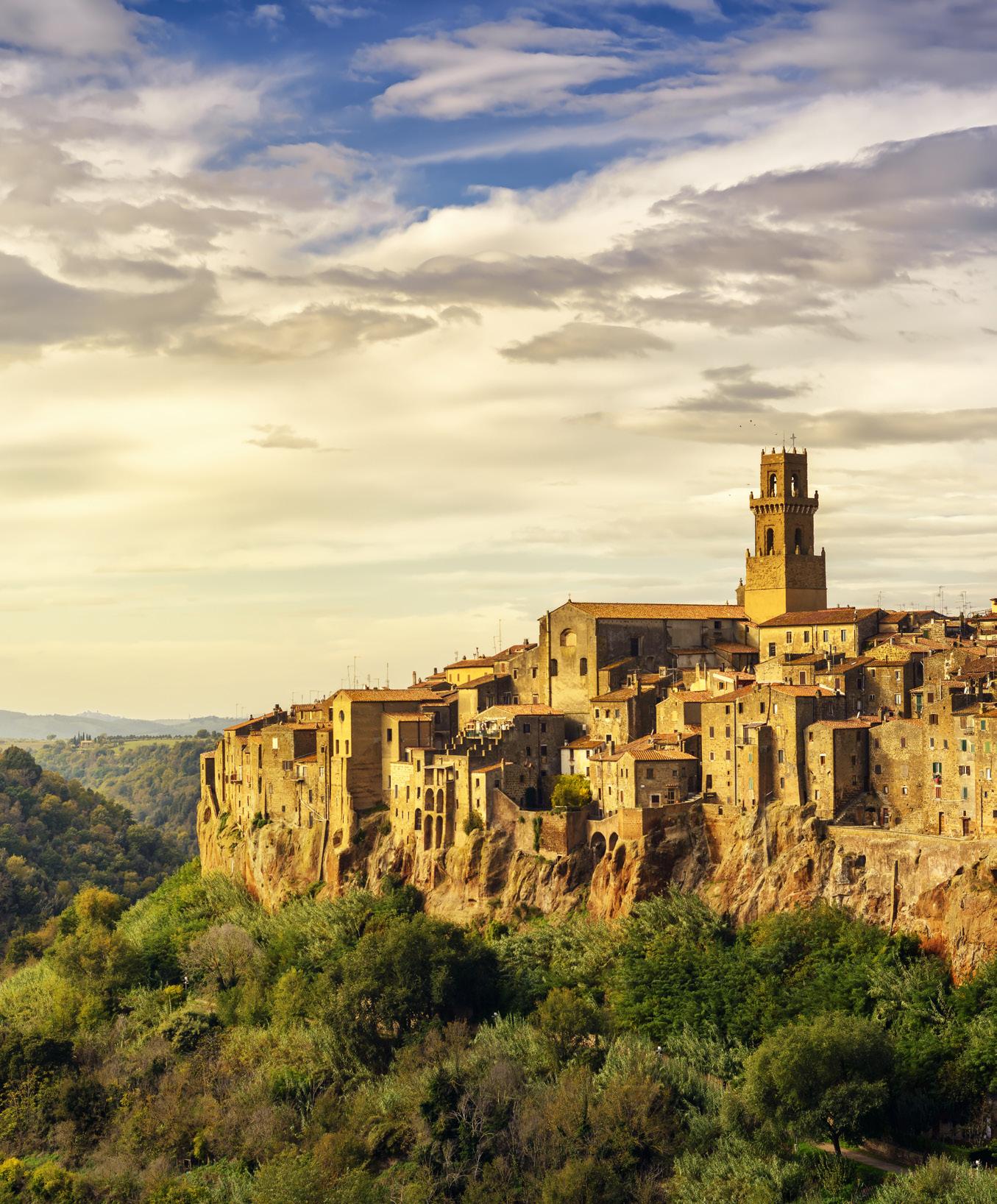
JEH: Our readers may never have heard of Pitigliano – can you tell us a little more about it? WH: Pitigliano is an Etruscan city. All around this area, you find their gravesites and other remnants of their settlements. It grew when the Orsini family took over the city and decided that they could facilitate wealth and growth by drawing more diverse people to the city. So, it is a rather unique place.
JEH: What is your favorite part of Pitigliano? WH: I love how it’s such a beautiful city and it lives in untouched nature. There are no main industries here. It is still an agricultural community, and I find the landscape jaw-dropping. It’s full of ravines and streams and the tuff (pronounced truffo) soil, which you see everywhere, is what they used to build the city. Tuff is compressed volcanic ash, which makes it easy to carve. It is why the city is so different and beautiful. There is a fresh energy here – it is energizing. I also love the old Etruscan paths that wind through nature.
JEH: Every Italian town has a pronounced city center where the traditional piazza is the backbone of the community. How would you describe Pitigliano’s? WH: The old city center is now considered one of the most beautiful in all of Italy. It has good stores and restaurants. And a great bar. Which is of course important to Italians. It is where we go each day for our morning espresso. On the weekends, locals meet up for apperitivos and dinner. The area is charming, well kept – there is a lot of pride.
JEH: Your family is from a different part of Tuscany, why did you choose Pitigliano for the site of your vineyard? WH: I was in love with the soil type. The volcanic soil. And the structure – especially the acidity – that would produce good wines. There is a certain saltiness that comes out of volcanic soils. Also, a certain tension and freshness in the soil. It leads to a nice sensation in the mouth.
Although over the past several years some big Italian wineries have bought land and vineyards in the Pitigliano area, the majority of vineyards are still family-run and sell to local cooperatives. So, in terms of managing and running the vineyard, it means that it is easy for an individual or small team to do. The vineyards here were actually developed in a very traditional way, when individual families ran them.
JEH: One can only imagine all the work involved in running a vineyard. Can you tell us a bit more about your experiences? What is it like to run a Tuscan vineyard?
WH: There is no doubt, it is a lot of work. From pruning and everything else that needs to be done to take care of the vines – leaf dropping, bunch (grape) dropping, shoot thinning – to spraying the vines for disease prevention. I am a bio vineyard and so use only purely organic products. Then there is the mowing and the planting. A constant routine must be kept up in-between rows to replenish the soil. The trellis systems must be monitored for repair, the machinery all kept in working order, the vineyard must be protected from wild animals, especially boar. The list goes on and on. But I love it.
JEH: You mentioned leaf dropping and bunch dropping. Can you explain what that means? WH: Leaf dropping is removing the leaves from the center of the canopy of the vine to allow for good ventilation. Bunch dropping is removing bunches of grapes in areas that are way too crowded. Overcrowding is not good for the grapes. You risk them rubbing against each other and creating damaging and also disease. Disease spreads through density.
JEH: How do you decide how many grapes or vines to grow? WH: It is about quality, and you have to decide how much yield you want. Too much yield will reduce the quality of the grapes. Too few and you are creating a product that is very expensive. Some people do have a small yield – they leave only a few bunches per vine – but the cost can be astronomical on those wines.
JEH: Can you give us an idea on what it is like during harvest time? WH: Organized chaos. It’s not chaotic in the sense that there is not organization, but it is the busiest time of the year and things move quickly. You don’t get a lot of sleep. It’s about managing the grapes coming in, getting them processed (fermenting), making sure there is enough space. You need to make decisions on quality – remove the grapes that may have a problem. It’s about six weeks of intense work.
A very important part throughout the entire process – from vine to bottle – is maintaining cleanliness and maintaining the yeast. The vineyard is a pretty steady job – you control your hours and mother nature controls the rest – but everything has to be really, really clean. You are disinfecting and washing all the time. Then there is the yeast. Yeast is temperamental, and you need to always keep control of it. You have to keep your eyes on it.
JEH: After the grapes are harvested, what’s the next step? WH: You are managing the fermentation process. Tasting the wine. It’s the first step to see how the wine is doing. How it is beginning to taste. If there is threat of contamination. With red wines, you need to know what
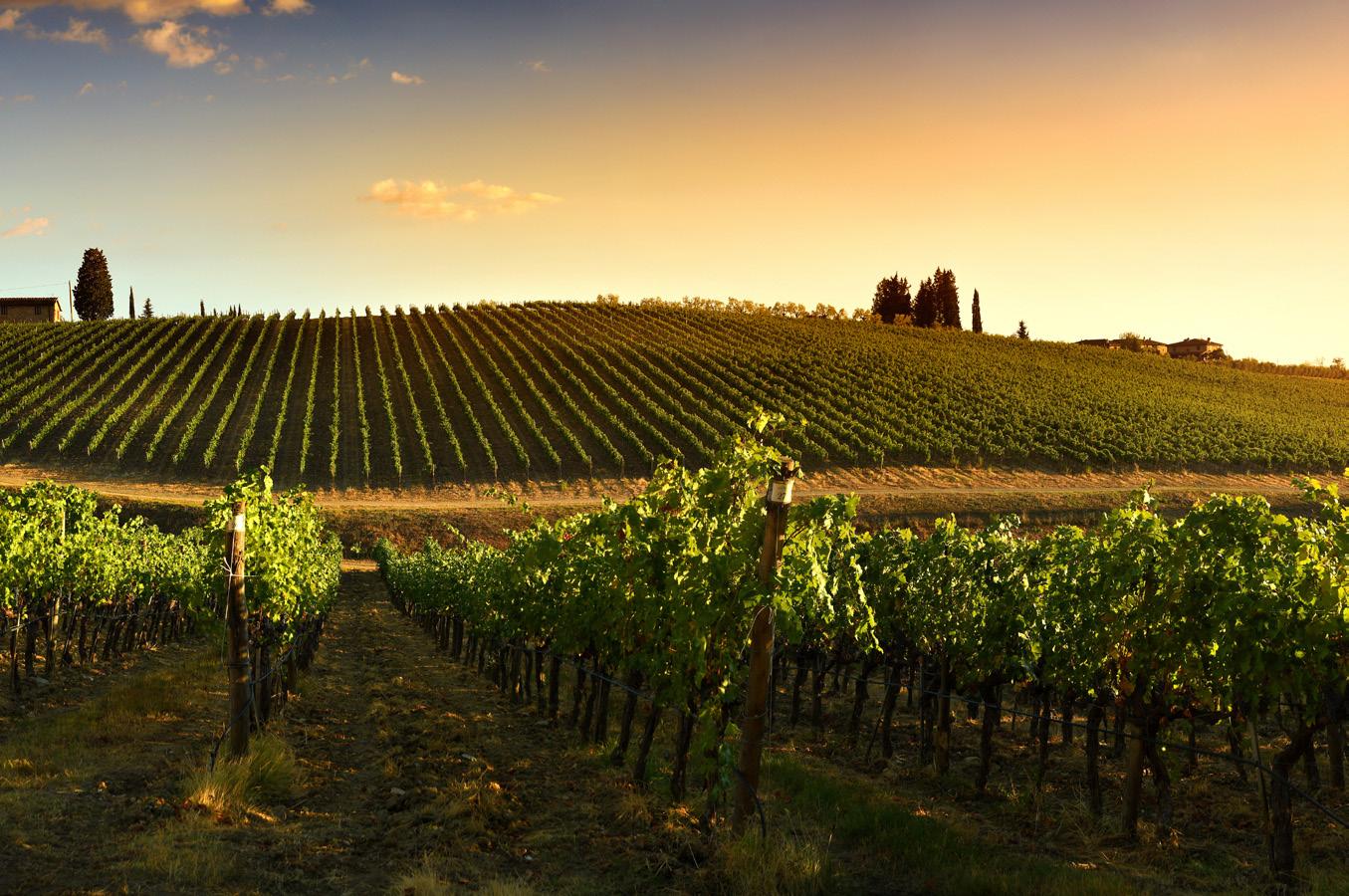
point to press. Skin contact, loss of acidity – you need to constantly monitor. Once all the wines have stopped fermenting and are pressed off then you can relax a bit. But just a bit. During this stage, you always want to make sure that the tanks are full and monitored. In the tanks you have to manage oxidation and the naturally occurring sulphur levels. Afterwards, you bottle.
JEH: When do you know when to bottle? WH: When you do it depends on the wine. Some wines bottle four years later, and some are bottled six months later. Others are bottled after a few months. But it really does all depend on the type of wine.
JEH: You also produce olive oil; can you tell us a little about that? WH: Olive trees are way easier to manage than grape vines. Grapevines need constant attention. Olive trees need a little bit of pruning – with them, the less you prune them the better – you can even let them go for a year. The only thing that you might do to olive trees is spray them with a little bit of copper for disease protection. You really don’t need to do much until it’s time to harvest them. JEH: How do you harvest the trees? WH: You basically have to shake them. For smaller producers like myself – I use a machine that looks like a set of tongs that mounts on to the tractor – it vibrates, and the olives fall off the tree and onto a net that is placed on the ground. Then, it’s time again for quality control. Checking the olives and making sure to remove any bad ones. Afterwards, they are gently run through an olive grinder/ masher. Traditionally, they were mashed by stone, but now it is a gentle process through the machine.
What’s important when producing olive oil is that it can’t ever get too hot. It needs to maintain an 18-23 C range (64-73 F) for a really good taste. That is what is termed cold pressing. Like the grapes, there is a whole process revolving around managing temperature and oxygen levels. But with olive oil, you bottle it as soon as its pressed, as it does expire.

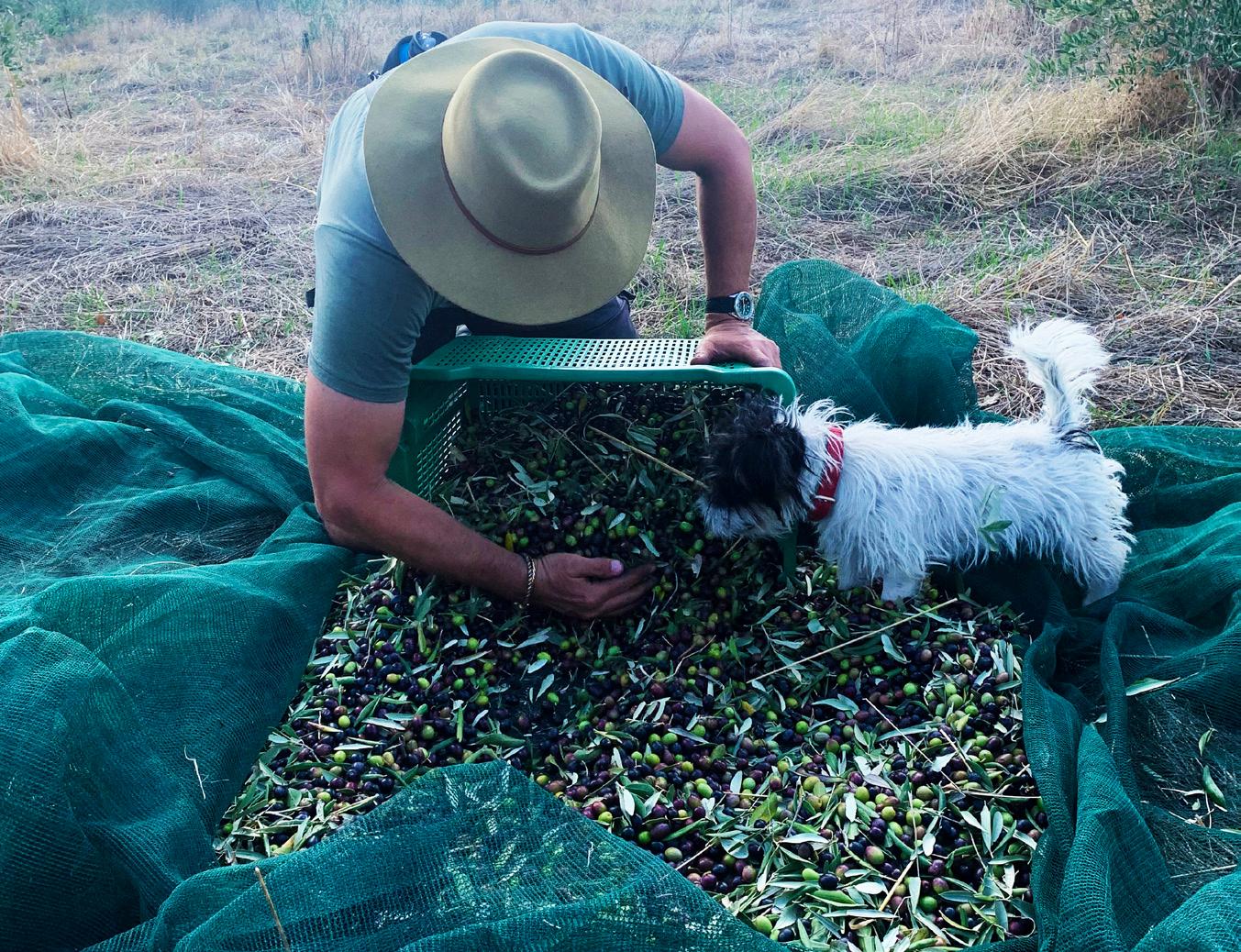
HOUSTON Everything is Just Fine
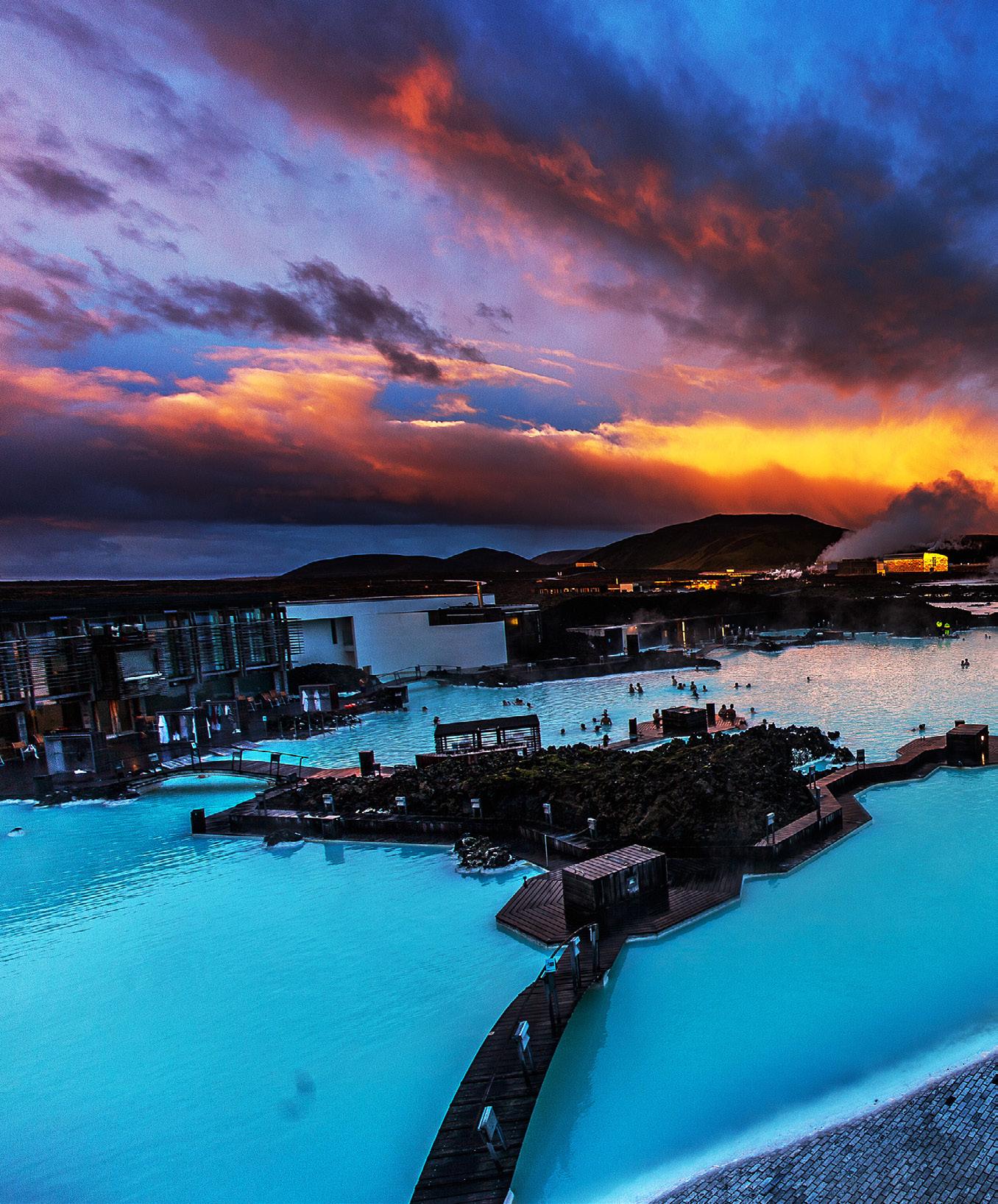
Arriving in Iceland is like arriving to the moon. Many think so – including NASA. In fact, nine of the 12 men who were first to set foot on the Moon in the 1960s and 1970s trained for their mission in Iceland. More recently, scientists visited the country to test rover technology for the mission to Mars.
Of course, you don’t need to book a seat with NASA or SpaceX to travel there. You just need to book an airline ticket from your hometown to Reykjavik, the capital of the country. There are many options of touring the country too. Individual driving tours, private tours, group tours – you name it, and you can find your match. And once you are there, prepare for an amazing time. Interested in some ideas to make memorable Icelandic memories?
DRIVE AROUND ICELAND IN 14 DAYS.
Can you do Iceland in 14 days? Believe it or not, you can. The country is actually not all that big. Two weeks gives you the opportunity to circle the island once without having to rush. By far the most popular mode of exploring Iceland is to drive along the Ring Road and wake up with a different view every morning. There are many itineraries that are found online for you to follow. But note – gas stations are not as plentiful in Iceland as they are in the US. Make sure to keep the tank topped up when you can.
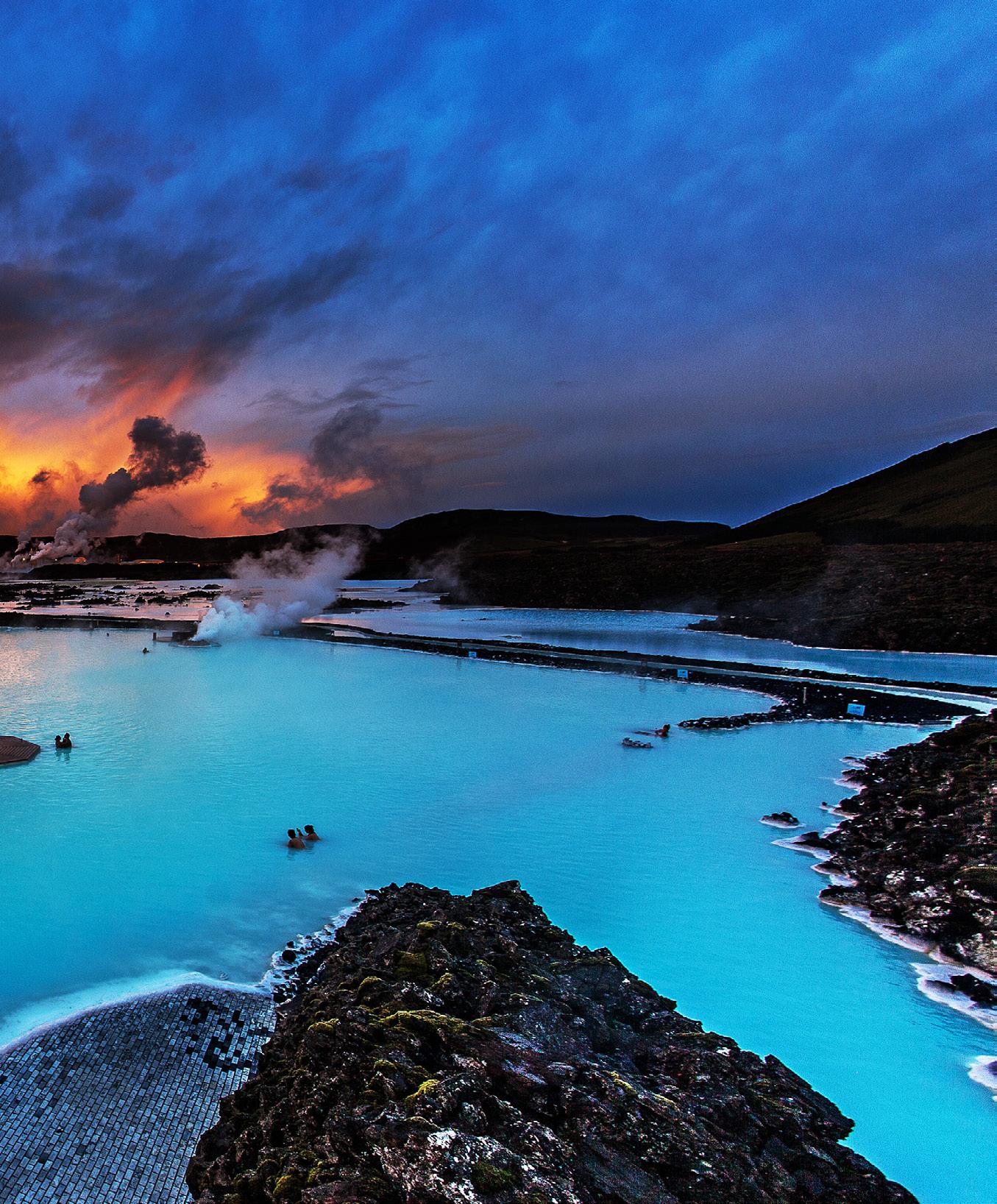
SPEND A DAY AT THE BLUE LAGOON.
The Blue Lagoon is a geothermal spa located 30 minutes outside of Reykjavik and is the most popular attraction in Iceland, drawing people from across the world. And there is good reason why it is so popular. The lagoon is considered to have notable regenerative qualities because the water is rich in silica and sulfur. A research and development facility on site finds cures and remedies for skin ailments, and silica mud is available for free on the sides of the pool for guests to enjoy a face mask. The temperature in the bathing and swimming area is comfortable, averaging 37–39° C (98–102° F).
The lagoon also boasts the LAVA Restaurant, the Blue Café and the Lagoon Spa which means that you can enjoy cocktails, delicious meals, and treatments such as massages without leaving the premises. Saunas, steam rooms, and a small waterfall are also on site. There is also a private room that can be rented for small parties, in which you can lounge in bathrobes and at leisure venture in and out of the lagoon’s waters. If you want an out-of-this-world sensation, travel there in the wintertime. You will experience snow falling on your head while you remain warm and toasty in its waters.

TAKE IN THE SIGHTS OF REYKJAVIK.
Although the capital of Iceland is provincial in nature, it’s incredibly hip and cool. It’s also easily walked. The smallish town is full of great shops, art galleries, cafes, museums, and cultural centers. It is a quick walk down to the harbor to watch bemused puffins. Or another quick walk to the Hallgrímskirkja, known as Iceland’s “official” church. It is well worth spending at least a day in the town wandering around.
VISIT THE GOLDEN CIRCLE.
Another of Iceland’s main attractions is the Gullfoss Waterfall, located in the Golden Circle. It is one of Iceland’s most iconic and beloved waterfalls. Its name translates to ‘Golden Falls’ and is so cherished for its uniqueness and beauty. The falls are created when water from the Hvítá river flows southward and then turns sharply to the right and down a wide curved three-step “staircase.” It then abruptly plunges in two stages (36 feet, 69 feet) into a crevice that is 105 feet deep. It is a spectacular sight.
Also in the Golden Circle are the Geysir Geothermal Area, full of boiling mud pits and exploding geysers, and Þingvellir National Park. The park is an historic site, known for the Alþing (Althing), the site of Iceland’s parliament from the 10th to 18th centuries. On the site are the Þingvellir Church and the ruins of old stone shelters. The park sits in a rift valley caused by the separation of 2 tectonic plates, with rocky cliffs and fissures like the huge Almannagjá faul.
The Golden Circle is located about 30 minutes from Reykjavik, and you can tour the area any time of the year. Spring, summer, and fall offer milder temperatures, and the landscape is free of snow. If you decide to spend a night near the Golden Circle during the summer, you’ll have the opportunity to see these places under the midnight sun. In winter, snow blankets the region, offering a unique experience. The water at Gullfoss waterfall continues to run, though there’s snow and ice wherever it’s not moving. This is also a great time to look for the northern lights.
RIDE AN ICELANDIC HORSE.
Icelandic horses are small in stature but tough in build. They are also incredibly gentle and sweet. There are many spots in Iceland that you can arrange for a horseback riding tour, and it’s a fantastic way to see the countryside (especially if you don’t have access to a car). Icelandic horses are often said to be very easy to ride. The truth is that due to their smooth gaits, it’s very easy to “get a lift” on an Icelandic horse. Because they have extra gaits, tölt and flying pace, there are some fundamental differences in riding. All that you need to remember if you decide to spend a morning or afternoon riding is to keep a straight and balanced seat and use light hands often with very light rein contact.
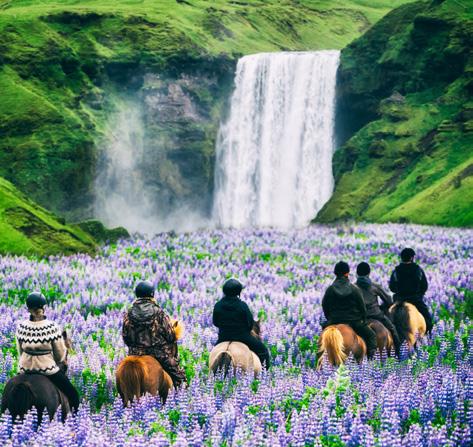
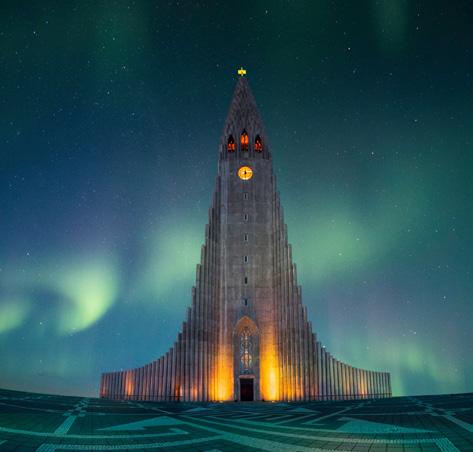

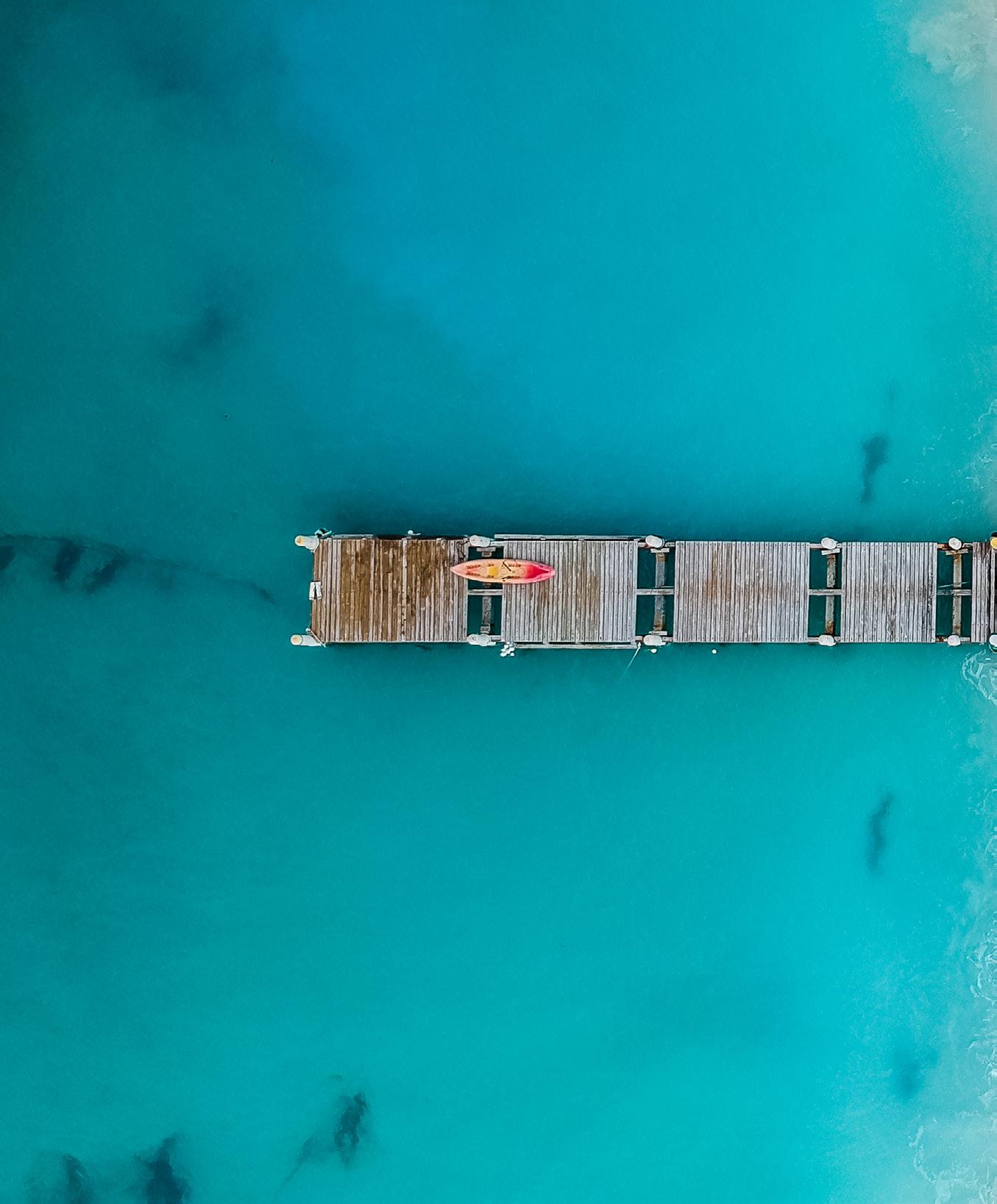
241 CARRIBEAN
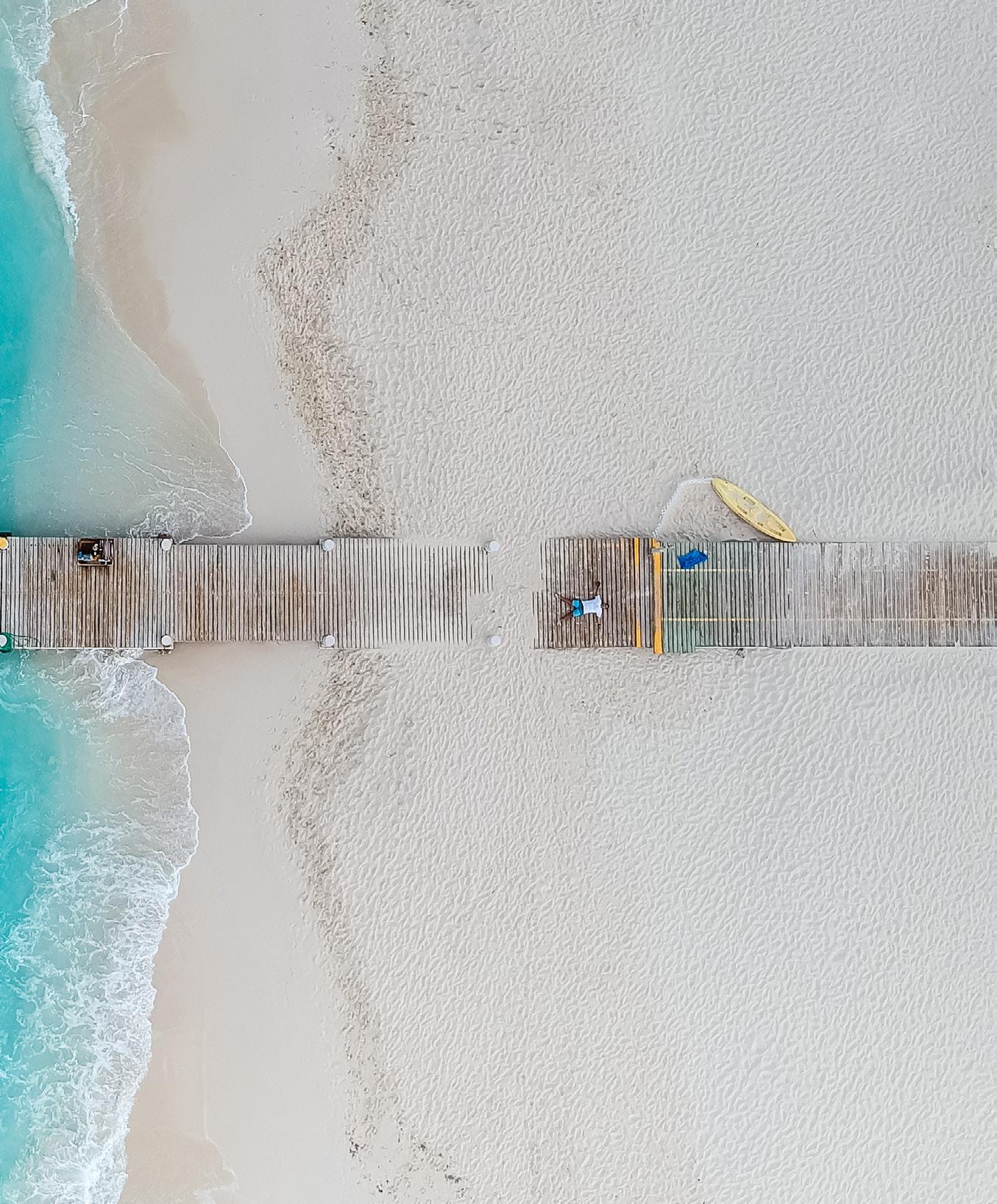
THE TOP 5 SNORKELING SPOTS IN ST. LUCIA
The azure waters and rich sea life of the Caribbean are the perfect setting for hours of snorkeling. In St. Lucia, this water activity does not disappoint. Here are the top five snorkeling sites off the island.
ANSE CHASTANET BEACH
Anse Chastanet Beach is one of the best places in St. Lucia to explore the underwater world. It offers easy access to a coral reef, which is marked with buoys, making it easy to find and safe for snorkelers since boats are prohibited from entering the roped-off area. Snorkelers at Anse Chastanet can view squid, corals, sponges, moray eels, and reef fish, including sergeant majors, trumpetfish, French angelfish, and parrotfish.
PIGEON ISLAND NATIONAL PARK
This national park is a fantastic stop for snorkelers who also want to do some hiking and learn about St. Lucian history. The best snorkeling starts about 15-20 feet from the beaches. Marine life in the area includes starfish, barracudas, eagle rays, moray eels, and lobsters.
ANSE DES PITONS – CORAL GARDENS
Set at the base of the iconic Gros Piton, Coral Gardens is an excellent dive site. The coral reef is packed with sea whips, gorgonians, feather duster worms, and numerous reef fish. The site is accessible by boat.
ANSE DES PITONS – SUGAR BEACH
Also set at Anse des Pitons is one of the best spots for snorkeling – Sugar Beach (also known as Jalousie Beach). It is located on the northern side of the bay beneath Petit Piton and is accessed through the protected marine reserve, which is marked off with ropes and buoys. If you’re not staying at the Sugar Beach Resort, you can take a boat tour or water taxi or purchase a day pass to access the beach by land.
MARIGOT BAY
Marigot Bay has made its appearance in several Hollywood films. The best snorkeling is off Marigot Beach on the north side. The sheltered cove has shallow waters that are suitable for those new to snorkeling and children. Although there are better snorkeling sites on the island, it is perfect for lessexperienced snorkelers. Here you’ll see coral formations, seahorses, and various tropical fish.
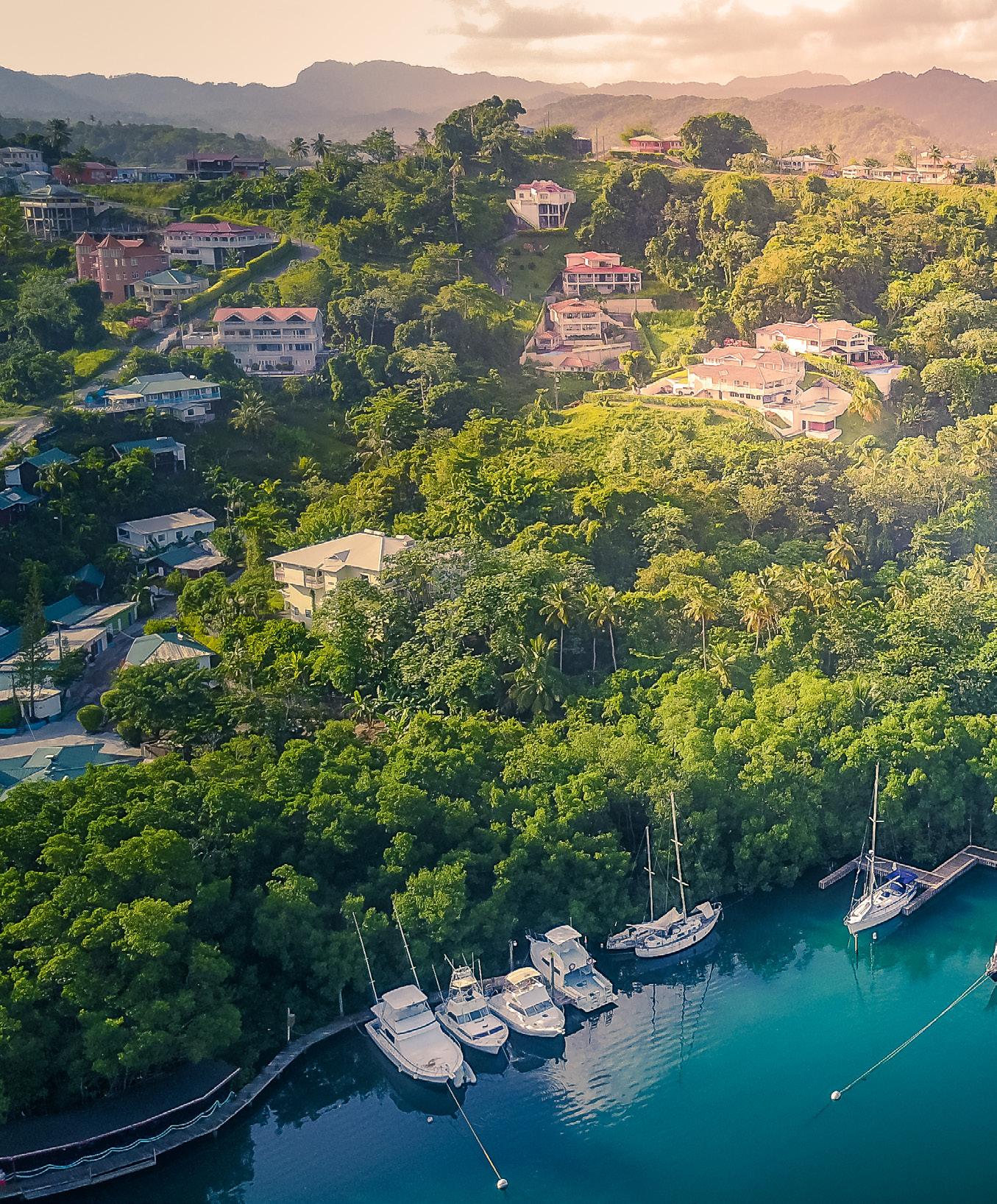
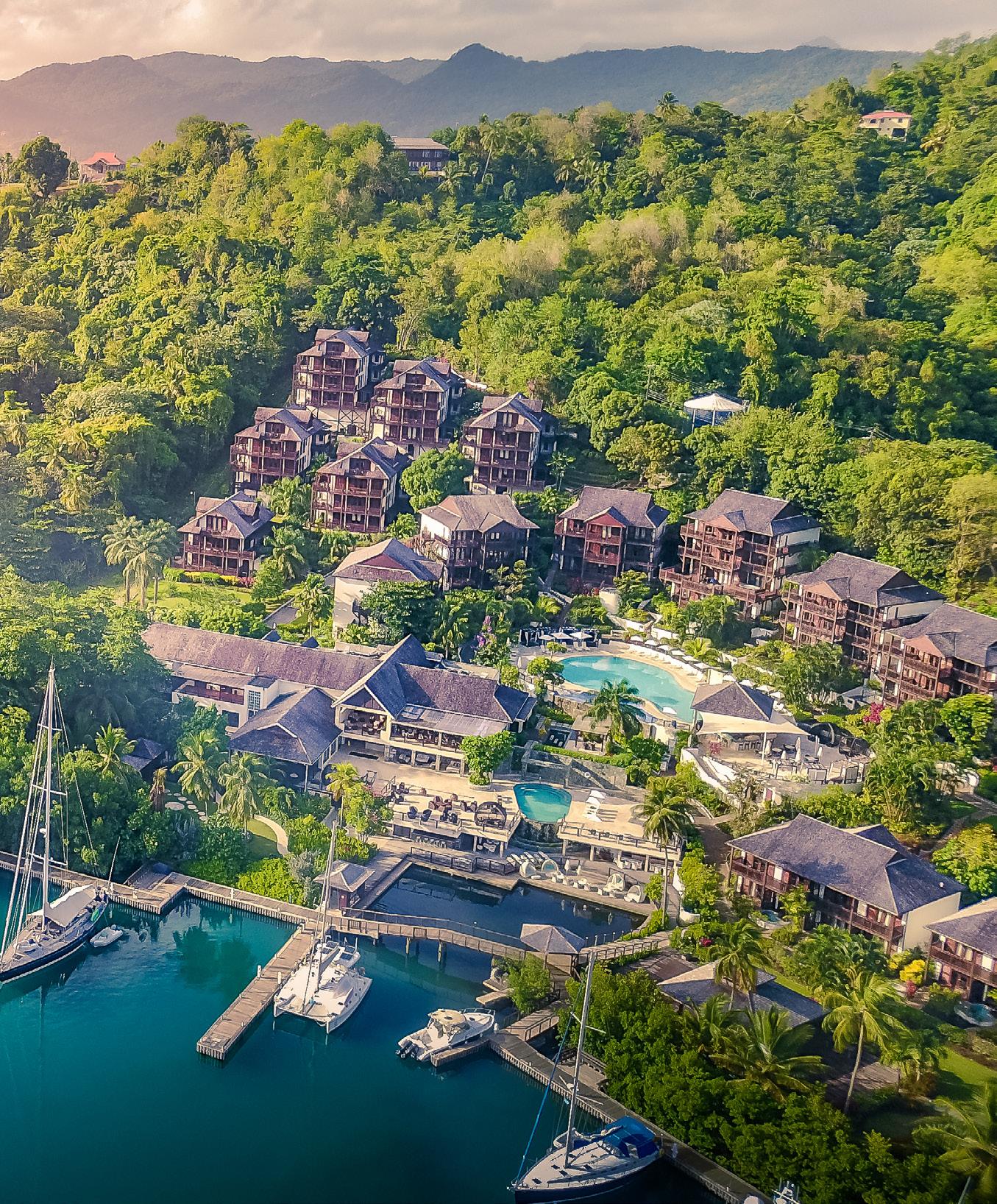
SNAPSHOT
Puerto Rico
An island paradise awaits that doesn’t require a passport, a change of money, or a long flight. Bienvenido a Puerto Rico! John Eric Home speaks with Manuel Lopez, a native of the island, for Snapshot: Puerto Rico.
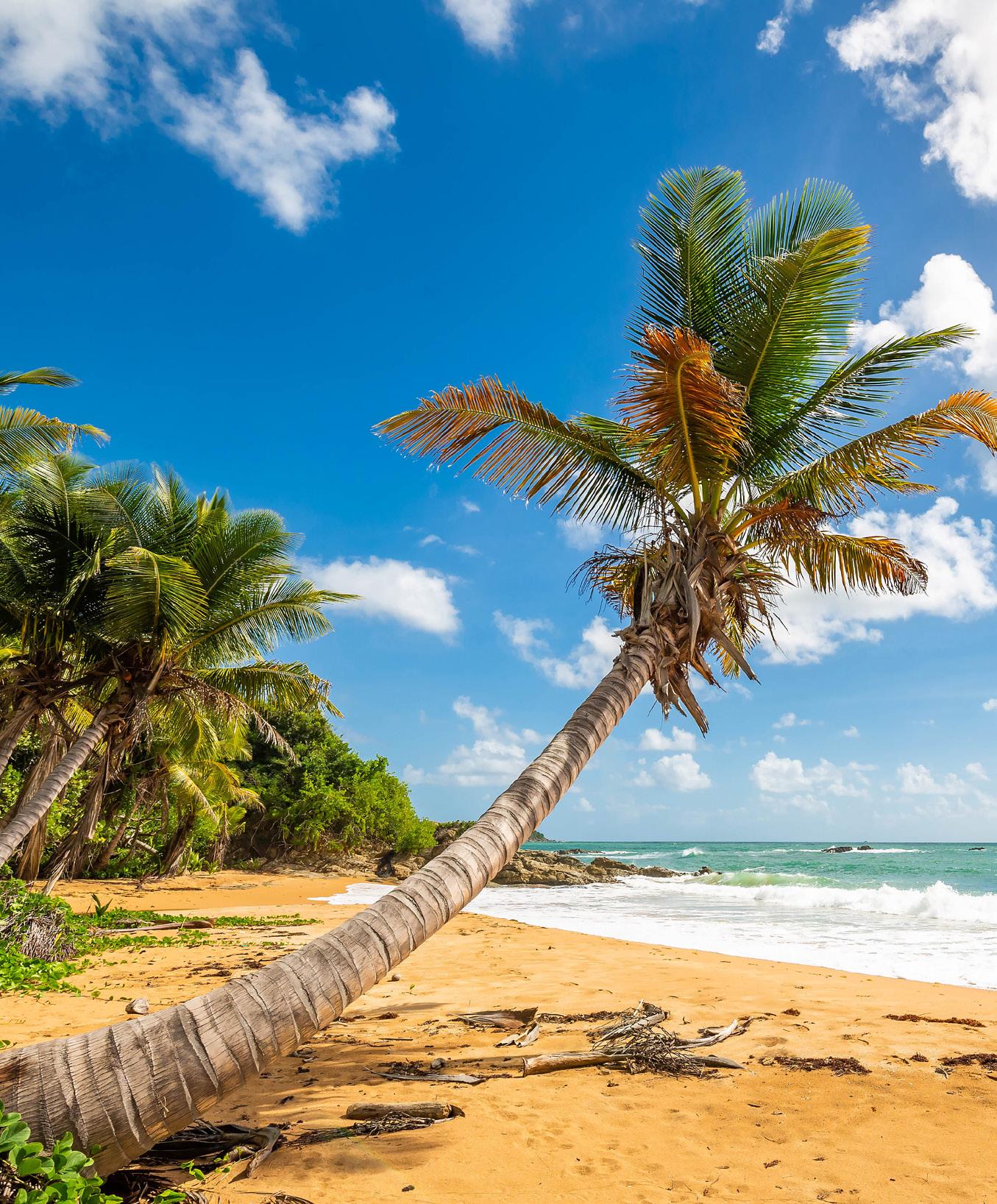
JEH: How would you describe living in Puerto Rico? ML: I would have to describe it living in the best of both worlds. I have a rich European culture in my background, but I am an American – so it is the best of both. In terms of living day-to-day, the main thing about Puerto Rico is nature and the outdoors. Because of our weather, you can enjoy it 365 days out of the year.
JEH: What are typical activities that locals enjoy? ML: Of course, the beach. We also have beautiful rainforests where we enjoy trail walks. Believe it or not, there are quite big 4x4 and Jeep enthusiast communities. Off roading is a real thing on the island. The Jeep clubs meet regularly, and they go on off trail expeditions. Other than that, Sunday is the day that many Puerto Ricans hit a new restaurant to try their food.
JEH: For visitors, what should they make sure to see or do? ML: You definitely want to stroll around Old San Juan. It is an old city, dating from the 1500s, and is full of history and great architecture. Another hotspot not to miss is Condado Lagoon. It is in San Juan, right in the middle of the hotels. It is a pretty walk and teems with nightlife. It is a new area and is more the touristy side of San Juan.
In Old San Juan make sure to go to Plaza de Armas. It is one of the town’s main squares and has a round fountain with four marble statues representing the four seasons. Another great place to take a walk is the Paseo de La Princesa. It runs along the southern city walls of Old San Juan, and the Puerta de San Juan, which is the only remaining city gate, is there. There are restaurants and cafes, street vendors and shops. And the views of Old San Juan and the bay are amazing.
Outside of San Juan, I would recommend a visit to Ponce. It is one of the oldest cities on the south coast and has a rum factory that is interesting to tour. Or take a day and go to Aguadilla. The beaches are amazing and so is the surfing. If you don’t mind a ferry ride, definitely go to the island town of Culebra and hang out on one of the most beautiful beaches in the world. It’s called Flamenco.
JEH: What is your favorite place on the island? ML: Old San Juan. To me – it means that I am home.
JEH: Can you please speak a bit on the people of Puerto Rico? ML: The people of Puerto Rico are very friendly and warm. They are open to people of all different cultures and all parts of the world because Puerto Rico is a big melting pot. The Tonce – original natives of the island -- Africans, Europeans, Americans… That is what makes Puerto Ricans so warm and ready to party. There is always a party! JEH: What are your thoughts on Old San Juan? ML: It’s so beautiful, and there is so much history. It is a fantastic place to spend the afternoon. If you can catch the sunset, you will be happy that you did. Old San Juan – it is like stepping back into time. There are still streets with the original cobblestones that were transported from Spain. It is rich in history. It is also a good place to eat and sample the local cuisine. It has everything from Spanish, to American to native Puerto Rican…it is a microcosm of cuisine.
JEH: How would you describe the beauty of Puerto Rico? ML: The beauty of Puerto Rico is in bursts of color. It’s the colors of Puerto Rico that make it so beautiful. The deep, emerald color of the sea contrasting the brilliant white of an opened coconut. The bursting colors of all the flowers. There is a tree that I love, the flamboyant tree. It blooms in scarlet red and orange and yellow. It’s beautiful.
JEH: What is the one word that you would choose to capture the essence of Puerto Rico? ML: An invitation. If you want to experience something new, something different… if you want to experience the best of the Caribbean, then come to Puerto Rico.

Turks & Caicos The Things Dreams are Made of...

BY SEAN O’NEIL
Sun, sand and fun. The Turks & Caicos Islands offer everything you need and is just a little over an hour from Miami which makes the area readily accessible from the eastern United States and Canada. 30 years ago, few people, outside of avid divers, would have been able to identify the Turks & Caicos Islands on a map of the Caribbean. But since then, the Islands have gone from being an area of incredible potential to being the leading luxury vacation destination in the Caribbean. The model upon which this success has been based has been a simple one – it is home to the most beautiful beaches in the world and has a low-density tourism.
THE BEST BEACH IN THE WORLD
When you Google the Turks & Caicos, it’s easy to understand the excitement surrounding the country. You are immediately greeted with images of the powdery white sand and the crystal-clear waters of Grace Bay Beach. This beach is consistently ranked one of, if not the best, in the world. Its beauty is the cornerstone upon which the Turks & Caicos tourist market is based. Boutique hotels and luxury villas stretch up and down the shoreline, allowing guests to enjoy the relatively unspoiled nature of the islands.
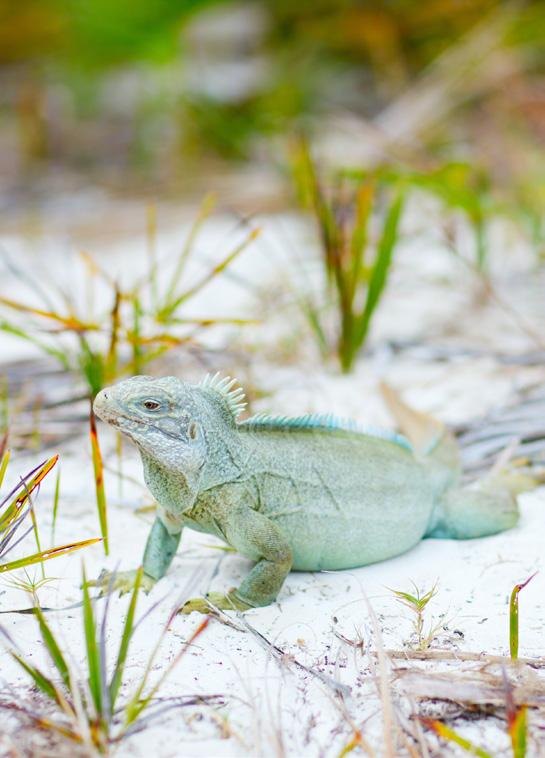
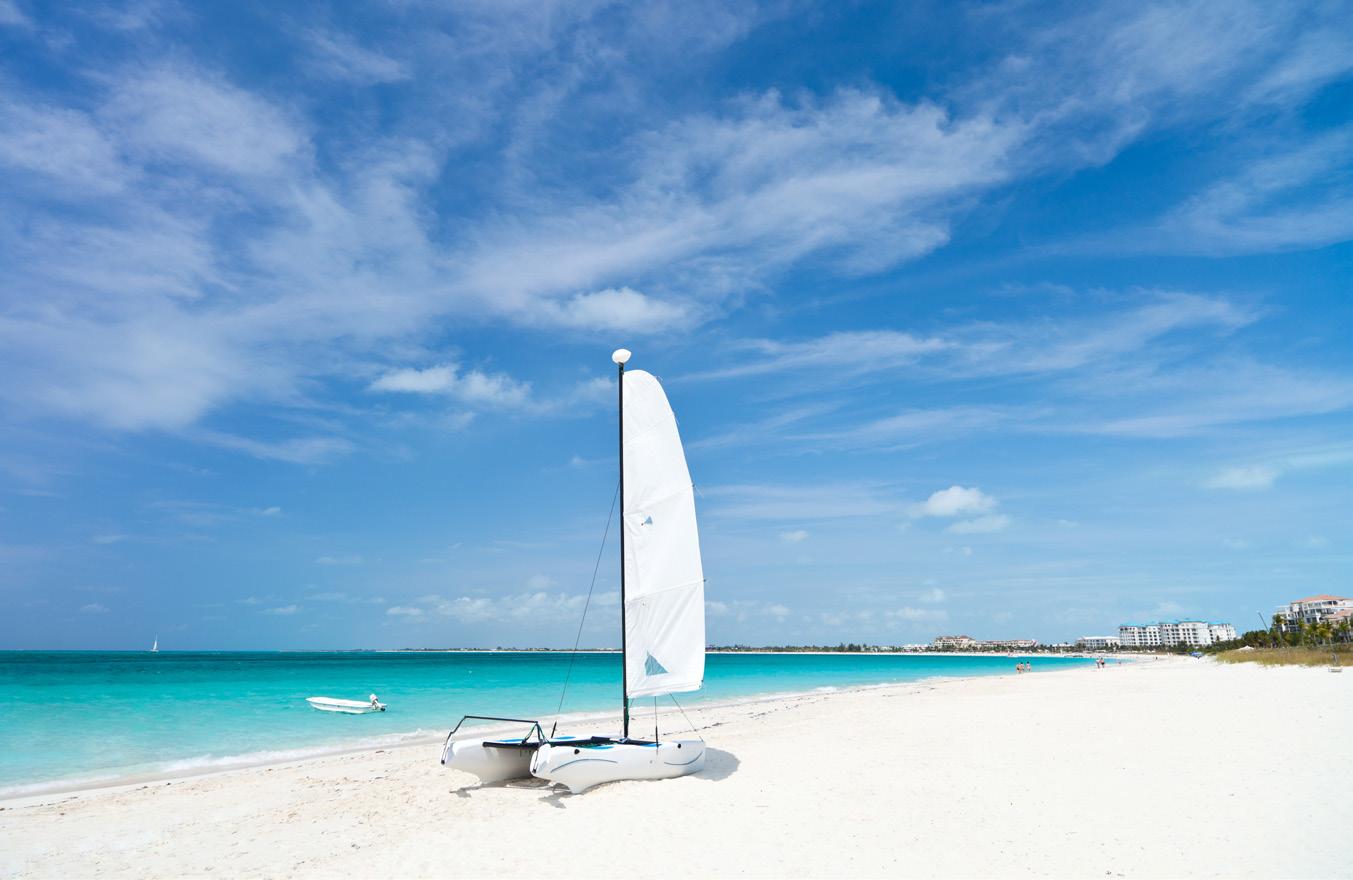
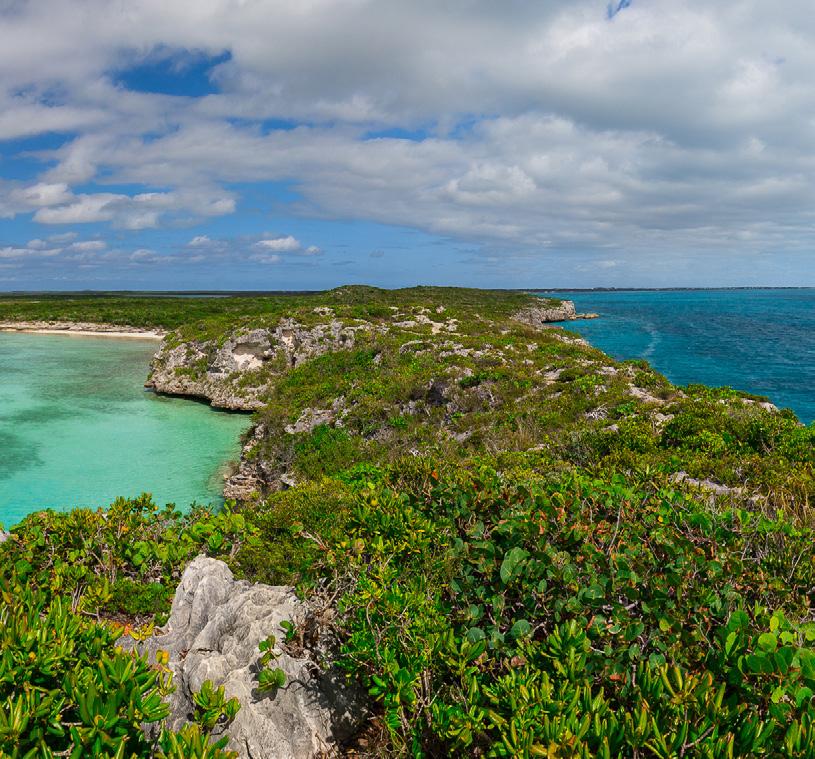

BEAUTIFUL BY NATURE
The Turks & Caicos is aptly marketed with the phrase “Beautiful by Nature” and the guest experience in the Islands is driven by this mantra. Potential guests are often told that if they are seeking an active nightlife, with throngs of people in a nightclub, this is not the destination for you. If your ideal vacation involves relaxing on the beach, sailing along uninhabited Cays, and detaching from the realities of the “real world” then you have found the right place.
Having really only started its development in the 1980s, with the opening of Club Med, the Islands slowly grew, focusing on the high-end market. This has evolved over time as the luxury villa market became a primary focus of the tourist industry, allowing guests to enjoy the Islands with the space and privacy that may not exist in a Resort environment. The focus on the luxury product has meant that guests have a choice of venues to suit their needs and their budget, all delivered within a beautiful, natural environment.
ISLAND HOPPING
While Providenciales and Grace Bay are at the heart of the tourist market here in the Turks & Caicos, they are only the start. From Providenciales, guests can travel east along the uninhabited small cays that stretch to North Caicos and enjoy unspoiled beaches that stretch for miles. These secluded beaches create a unique experience across the Caribbean, as their proximity means that only a ten-minute boat ride separates you from splendid isolation.
Further afield, guests can visit North and Middle Caicos. These large islands carry a long history as American Loyalists, fleeing the 13 colonies sought to establish plantations here (all of which ultimately failed), and the Taino Indians sought refuge in the cave systems of Middle Caicos. Through the work of the Turks & Caicos National Trust, guests can visit both the Indian Caves and Wades Green Plantation to learn about the history of the islands. One of the highlights of any trip to North and Middle Caicos is the stunning drive across the causeway that connects the two pieces of land. It traverses some of the most electric blue waters you will ever see. Shortly after the causeway you will find the incredible, elevated, natural rock formations of Mudjin Harbour and Dragon Cay. One of the most beautiful places in the Turks & Caicos Islands.
WALKING WITH DINOSAURS
A unique experience to the Turks & Caicos, and readily accessible from Provo (local term for Providenciales), is the trip to see the indigenous rock iguanas of the Islands at Little Water Cay, or Iguana Island. Under the stewardship of the National Trust, the iguana population has thrived on this small Island after the population was wiped out on other Islands through
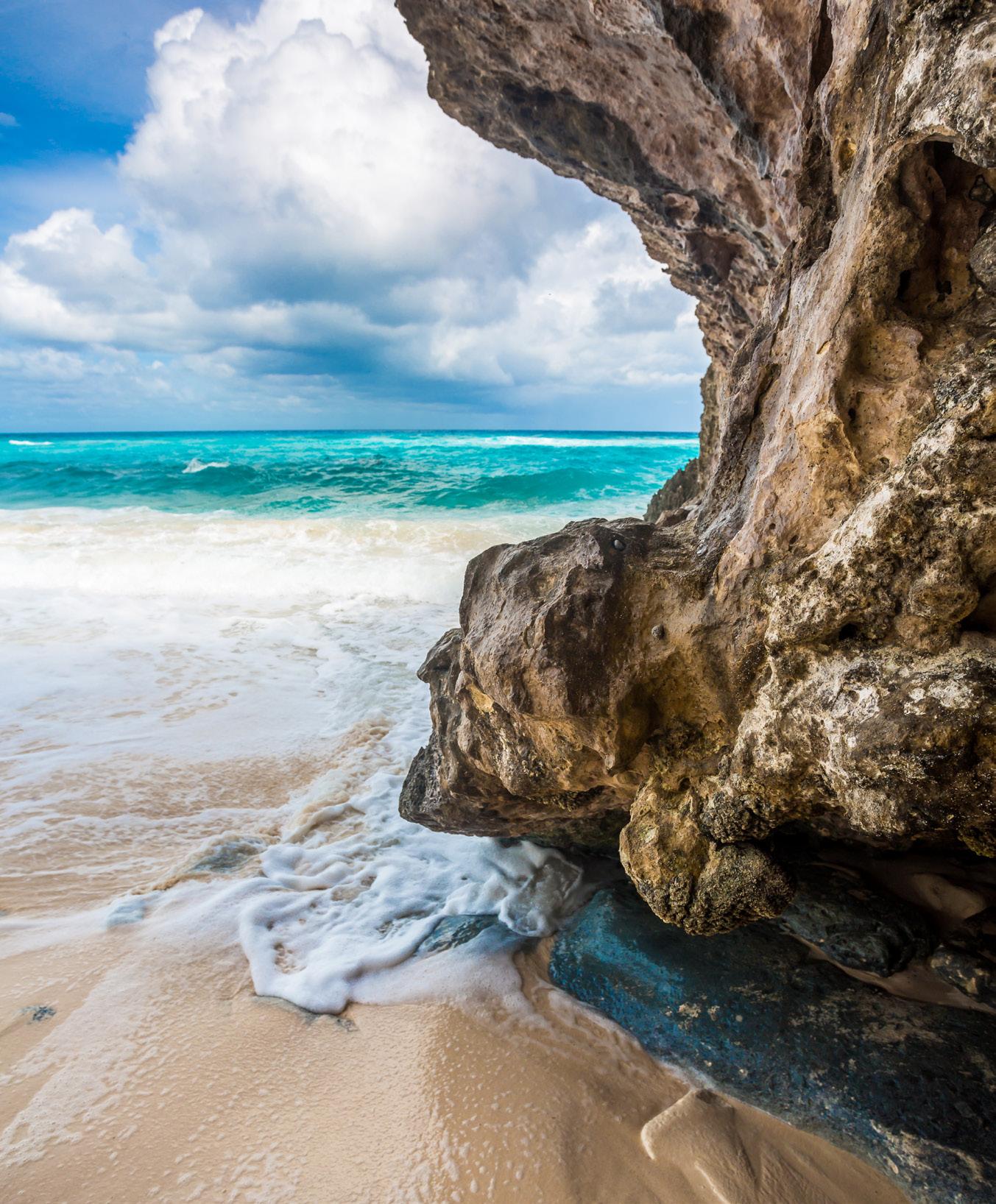
the introduction of domestic animals such as dogs and cats. These dinosaur-like creatures are definitely not going to be forgotten after your visit!
GETTING HERE
Airlift to the Turks & Caicos is as impressive as you are going to see in the Caribbean. With direct flights from all major airports on the East Coast (Boston, New York, Washington, Charlotte, Miami and Fort Lauderdale) as well as Chicago, Houston, Dallas, Toronto and Montreal it is incredibly easy to access the Islands.
THINGS TO KNOW
• The United States Dollar is used as their currency. • They are in the Eastern time zone. • International flights land at Providenciales International
Airport (PLS). • Visitors are required to have a valid passport for entry to the country. • Americans, Canadians and most Europeans do not require a visa to travel here as a tourist. • As of May 1, 2022, there is no Covid-19 testing requirement to enter the Turks & Caicos, although at the time of writing tourists must still be vaccinated against Covid-19 to enter the country. • If you’re traveling with pets, you’ll need a veterinary certificate stating your animal is in good health. • There are two fixed-base operators on Providenciales for private aircraft. Both offer fuel, immigration and customs clearance and other services.
OUR FAVOURITES
DINING
Something Casual – CocoVan – Set in a classic airstream trailer set amongst a coconut palm jungle, this casual restaurant has incredibly tasty food in a relaxed atmosphere and is adjacent to its famous sister restaurant Coco Bistro. Sunday Afternoon Spot – Omar’s Beach Hut - There are few places nicer to spend a Sunday afternoon than Omar’s Beach Hut in Five Cays. With seating that stretches out into the water during high tide, this is the perfect place to enjoy live music and fresh island food. Dreamy Sunsets – Magnolia – There are few places that offer a beautiful view over the barrier reef and spectacular sunsets like Magnolia. Perched over Turtle Cove Marina the restaurant has been a Provo staple for over two decades. Set amongst the original Erebus Hotel, the bar dates back to the early days of Provo’s development. If walls could talk these would tell the best stories on the Island. Fine Dining – Indigo – One of the culinary highlights of any trip to the Turks & Caicos will be Indigo at Wymara Resort. A carefully thought out and fresh menu is the cornerstone of Chef Andrew Mirosch’s signature restaurant here in the Islands. Offering fish that is fresh, never frozen, and specific vegan and vegetarian options, the menu can cater to all patrons. The two highlights of the week are the Wednesday evening fish fry and the Saturday evening BBQ.
EXCURSIONS
Adrenaline – Wake2Wake – No one matches the adrenaline of Wake2Wake watersports. Their Instagram account alone is enough to convince guests to travel to the Turks & Caicos. Whether it is wakeboarding, wakesurfing, or diving off abandoned freighters, enthusiasts will get their blood pumping on a day out. Fishing – Talbots Adventures – Nothing like a fourth-generation fisherman to guide you through the waters of the Turks & Caicos. Levardo Talbot does an amazing job, whether that is in high octane offshore fishing for Marlin, Tuna or Wahoo, or quietly stalking bonefish in the flats. Talbots Adventures will put you on the fish. Relaxation – Sail Beluga – The gentle trade winds allow for guests to enjoy quiet days out on Sail Beluga. The 40-foot catamaran provides a uniquely personal and relaxing way to experience the turquoise waters and white sandy beaches of the Turks & Caicos Islands.
ACCOMMODATION
Beachfront Chic – Wymara Resort & Villas – Set on one of the widest stretches of Grace Bay Beach, Wymara Resort gives guests the best of experiences within a boutique 91-room resort. With two onsite restaurants, an award-winning spa, full services, and access to Grace Beach, it is an ideal getaway. Additionally, Wymara Villas offers larger groups the exclusivity and privacy of a Villa without sacrificing the 5-star service of the Resort. Villas – TKCA Vacation Rentals – Regardless of whether guests are looking to set themselves on the kite surfing mecca of Long Bay Beach or have stunning views of the North Shore of Providenciales, TKCA are available to guide guests throughout the reservation process and while they are on Island. Grace Bay Opulence – Vision Beach – This beautiful 5-bedroom villa sits on 240 feet of Grace Bay Beachfront and is ideally suited for large groups, capable of hosting up to 16 guests. The fully staffed property includes a private chef, outdoor pool table, heated pool, hot tub, expansive beach deck, stand-up paddle boards, kayaks, a private dock space for boat charter pick-ups and access to Vision Kite on Long Bay for kite surfing access.
THIS IS NOT AN OFFER TO SELL BUT IS INTENDED FOR INFORMATION ONLY. THE DEVELOPER RESERVES
